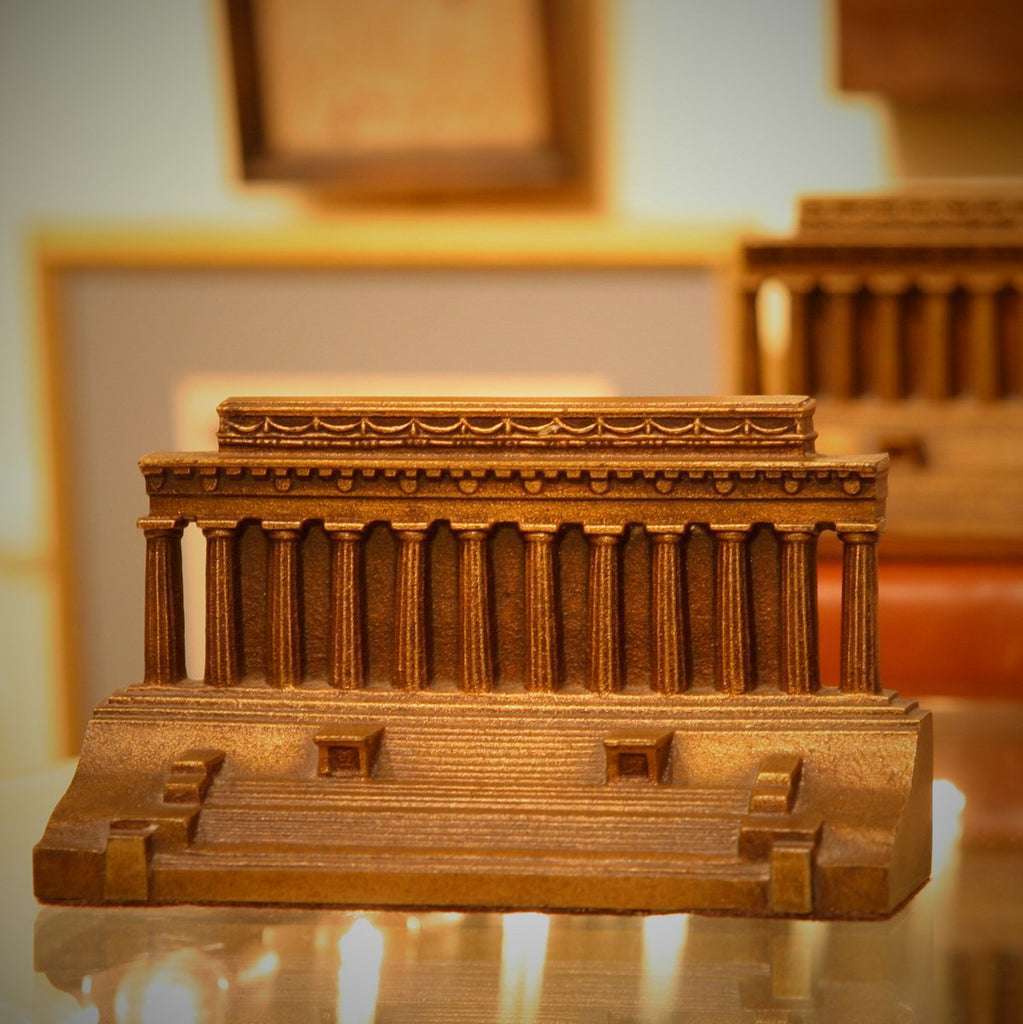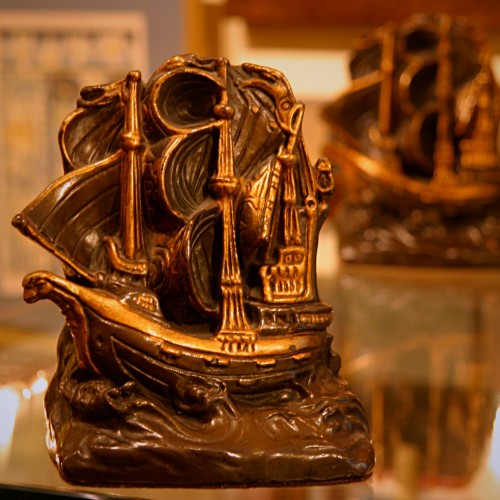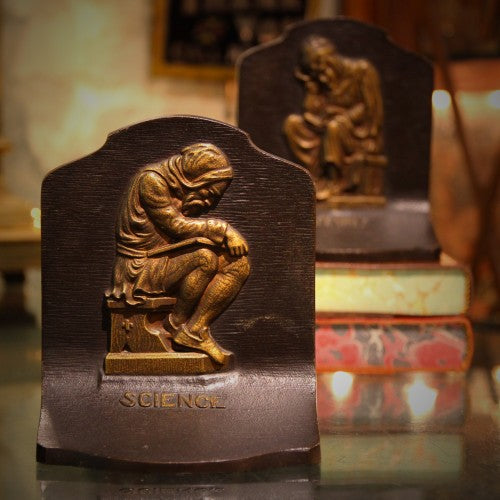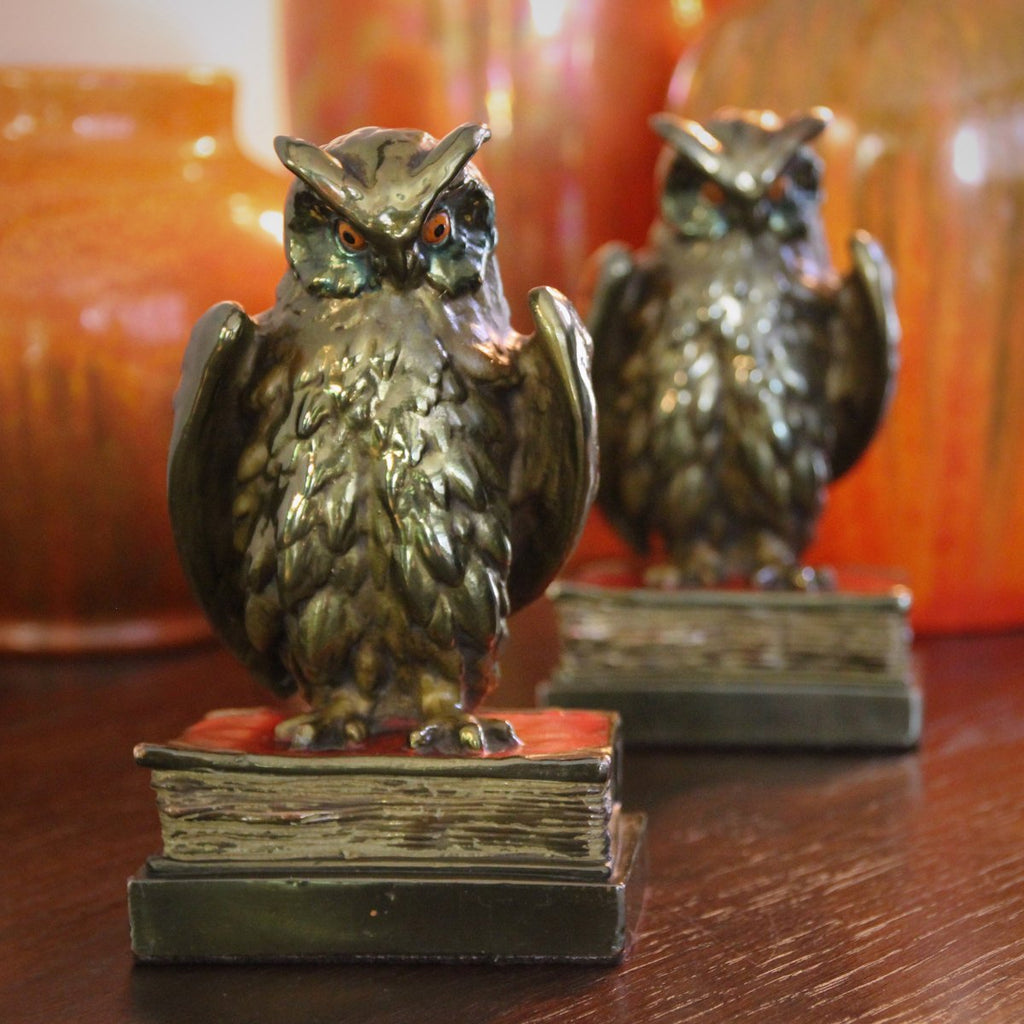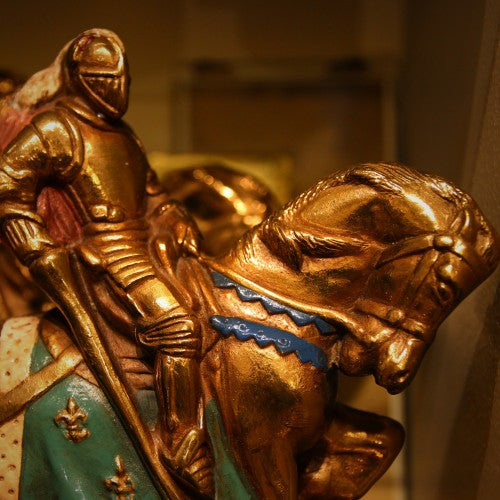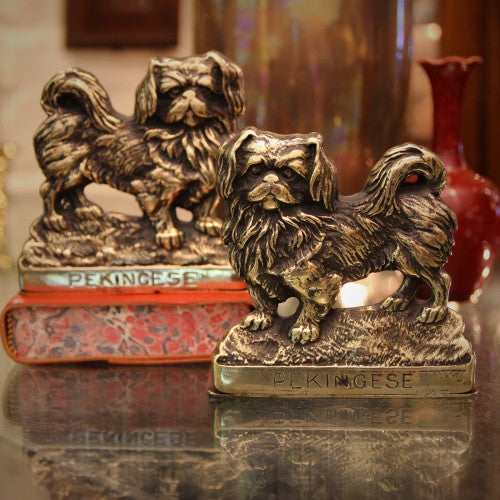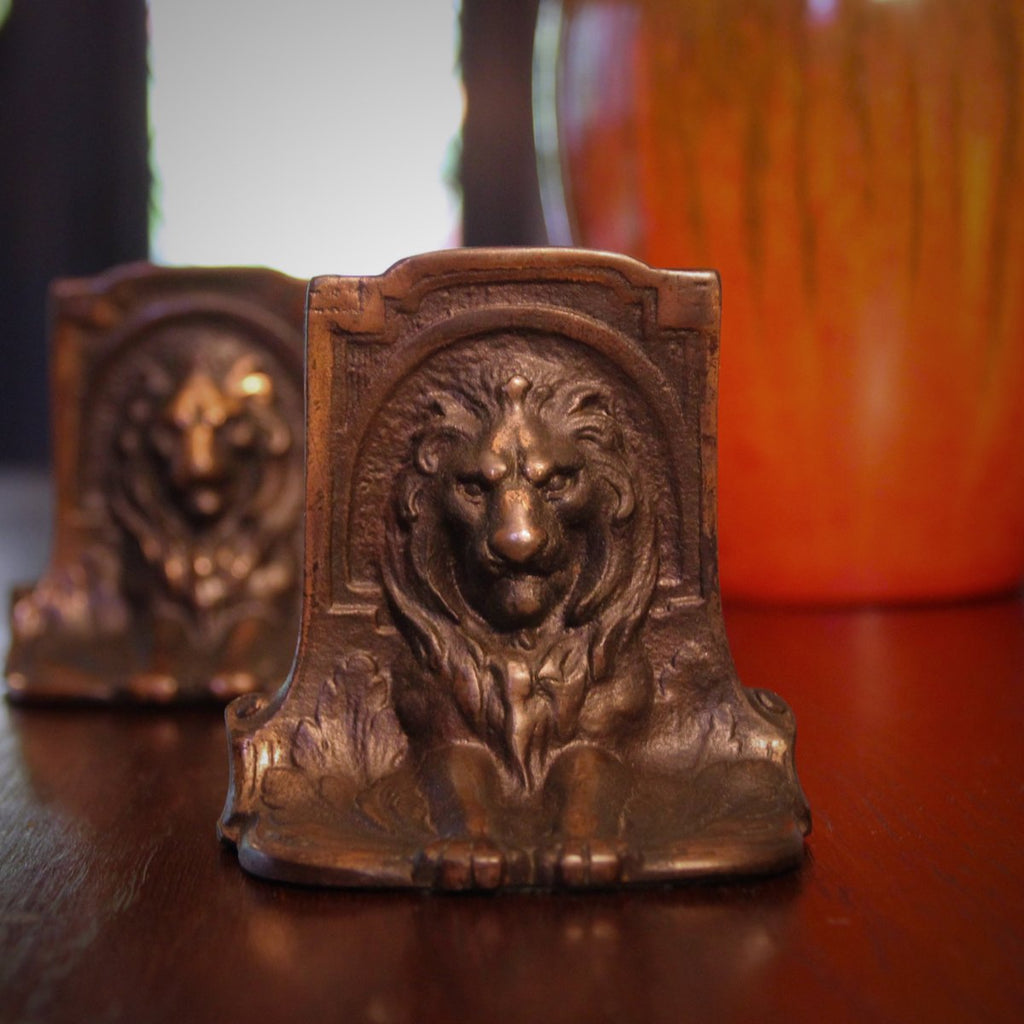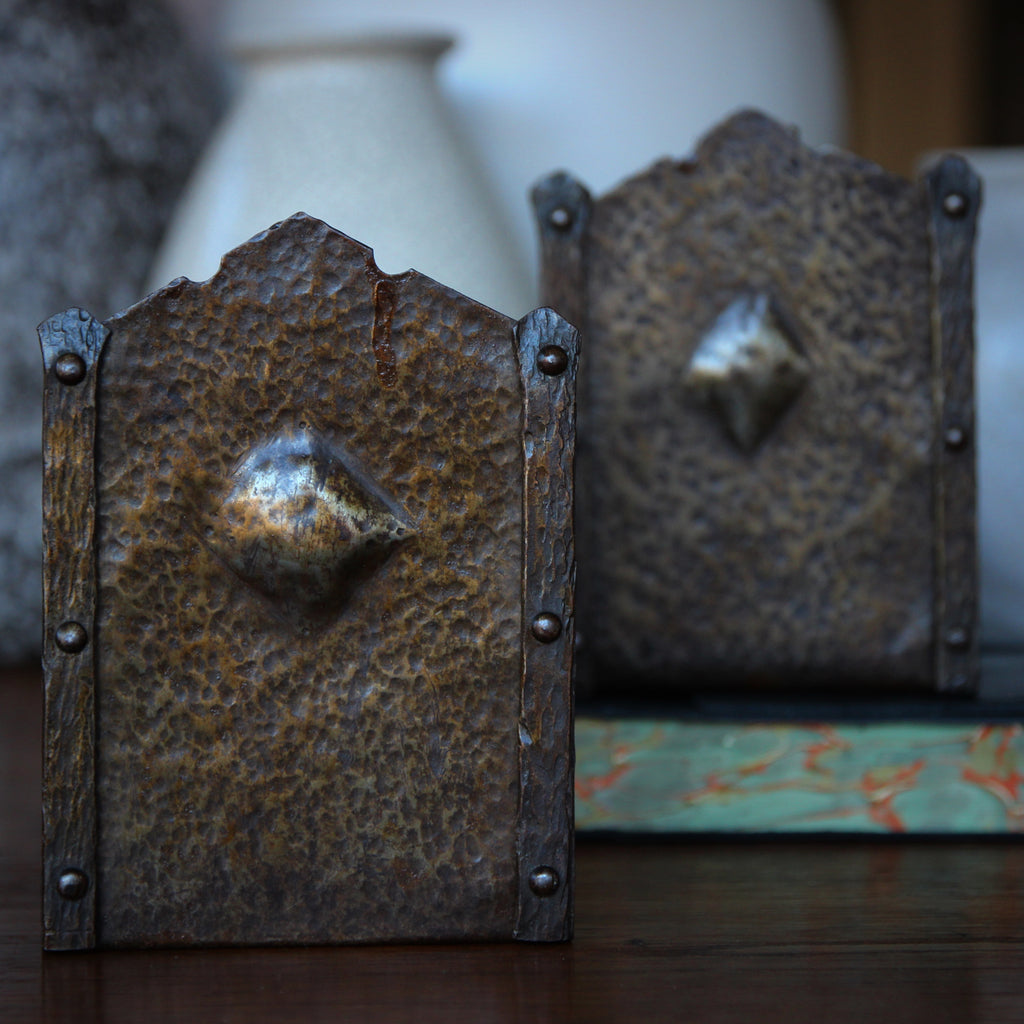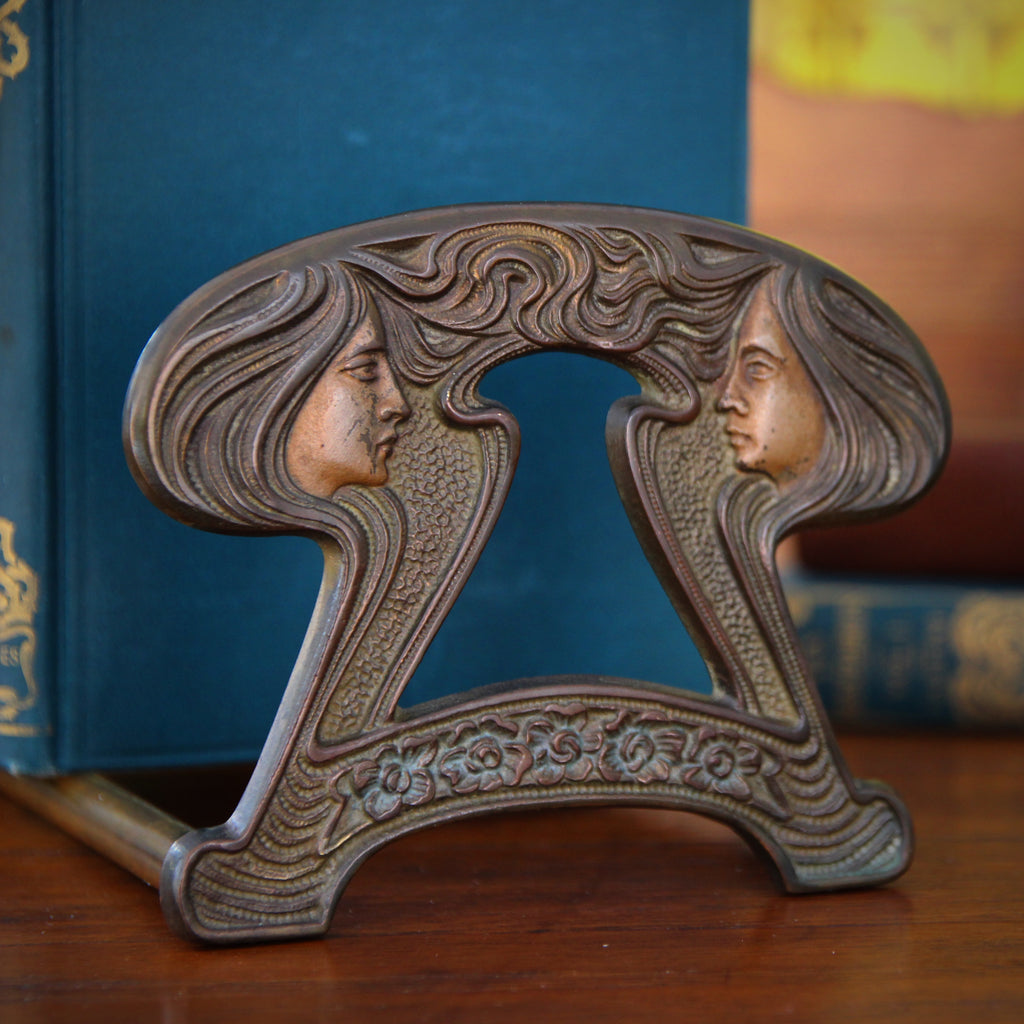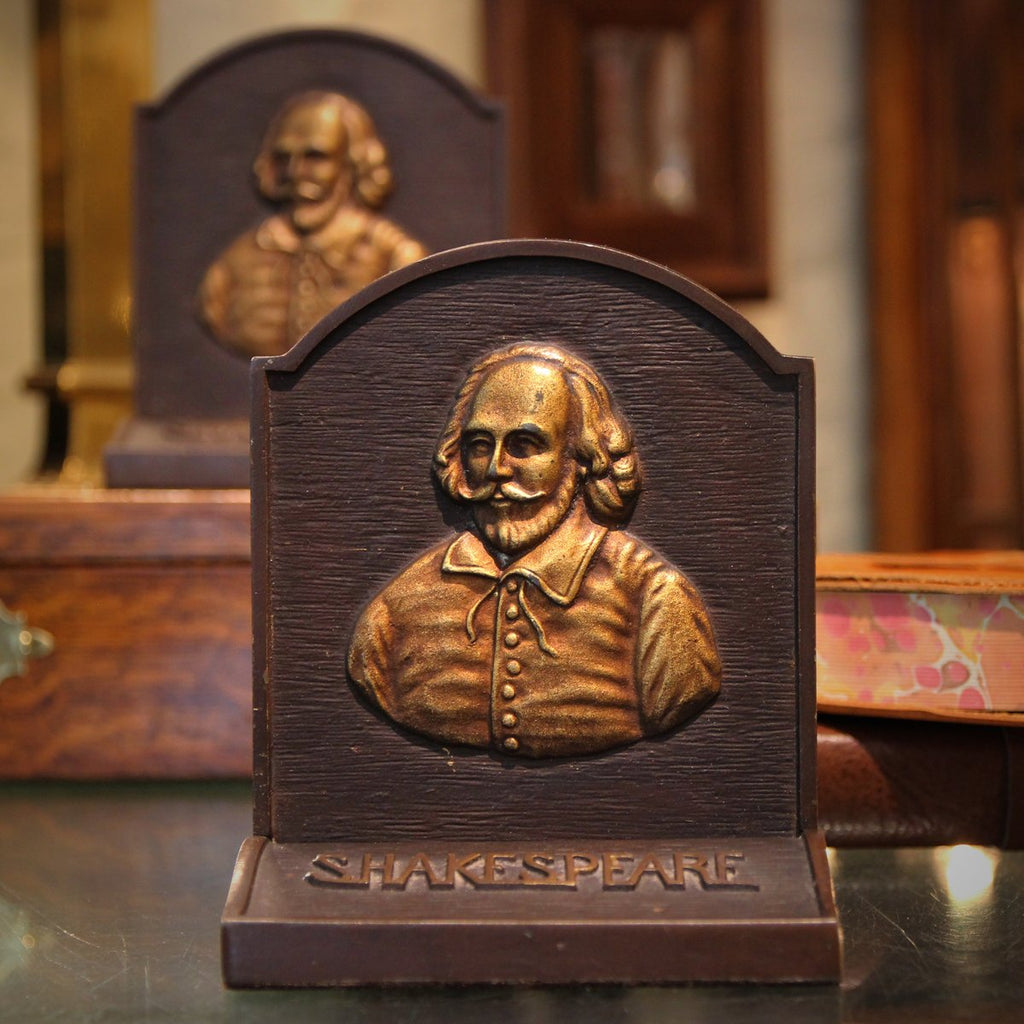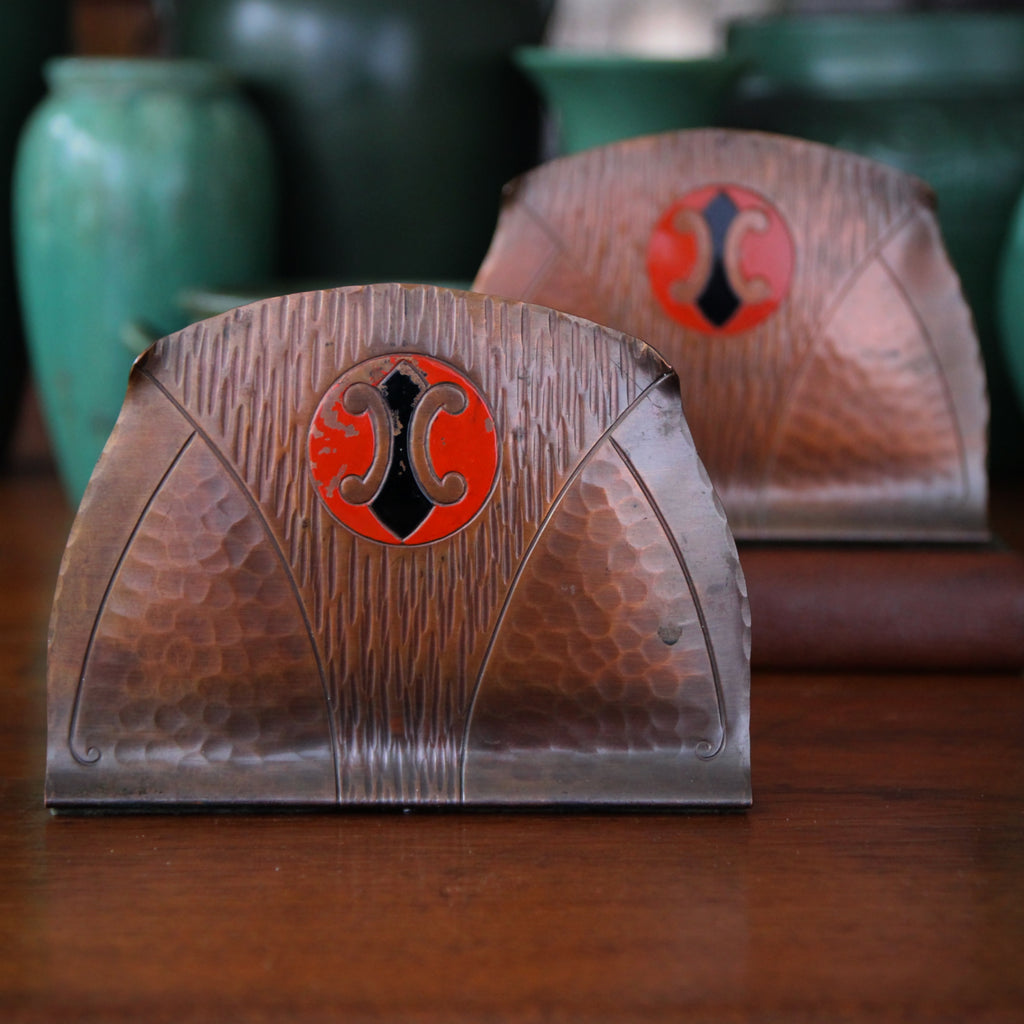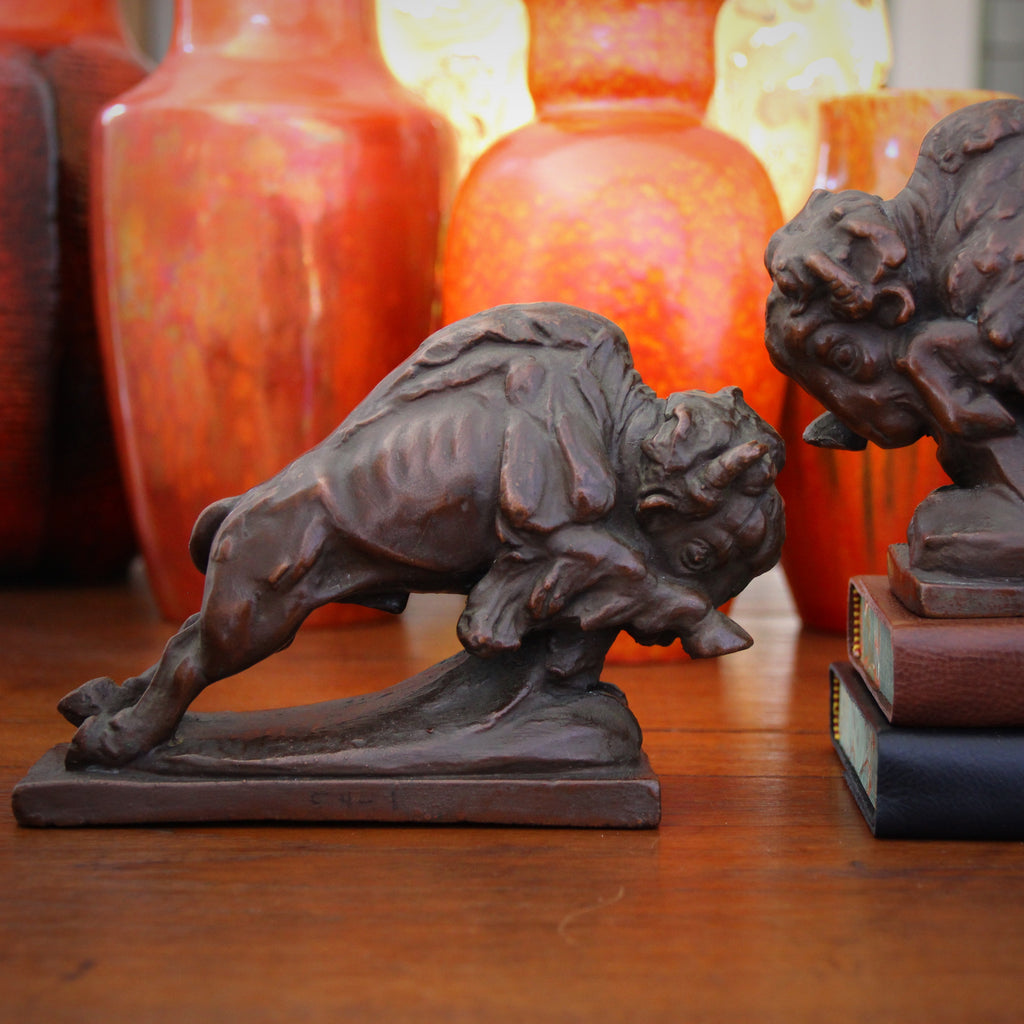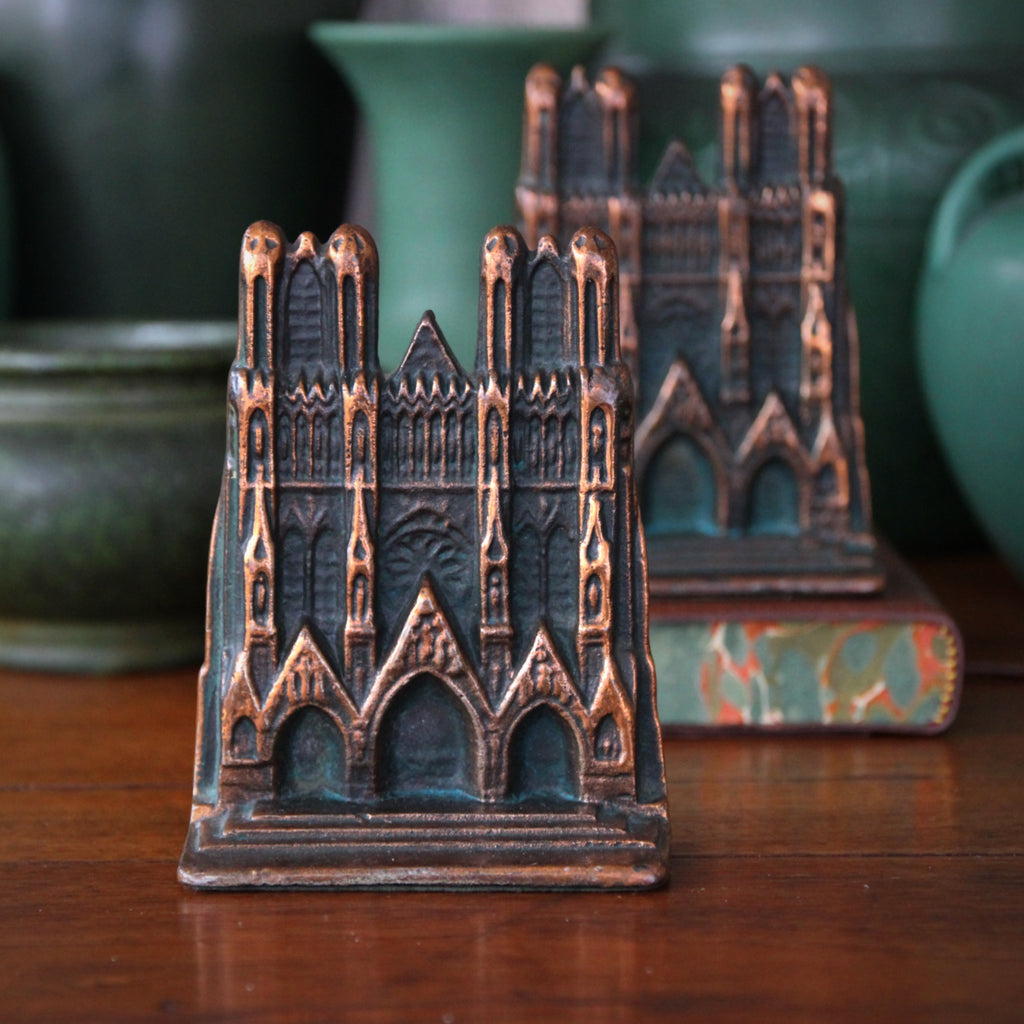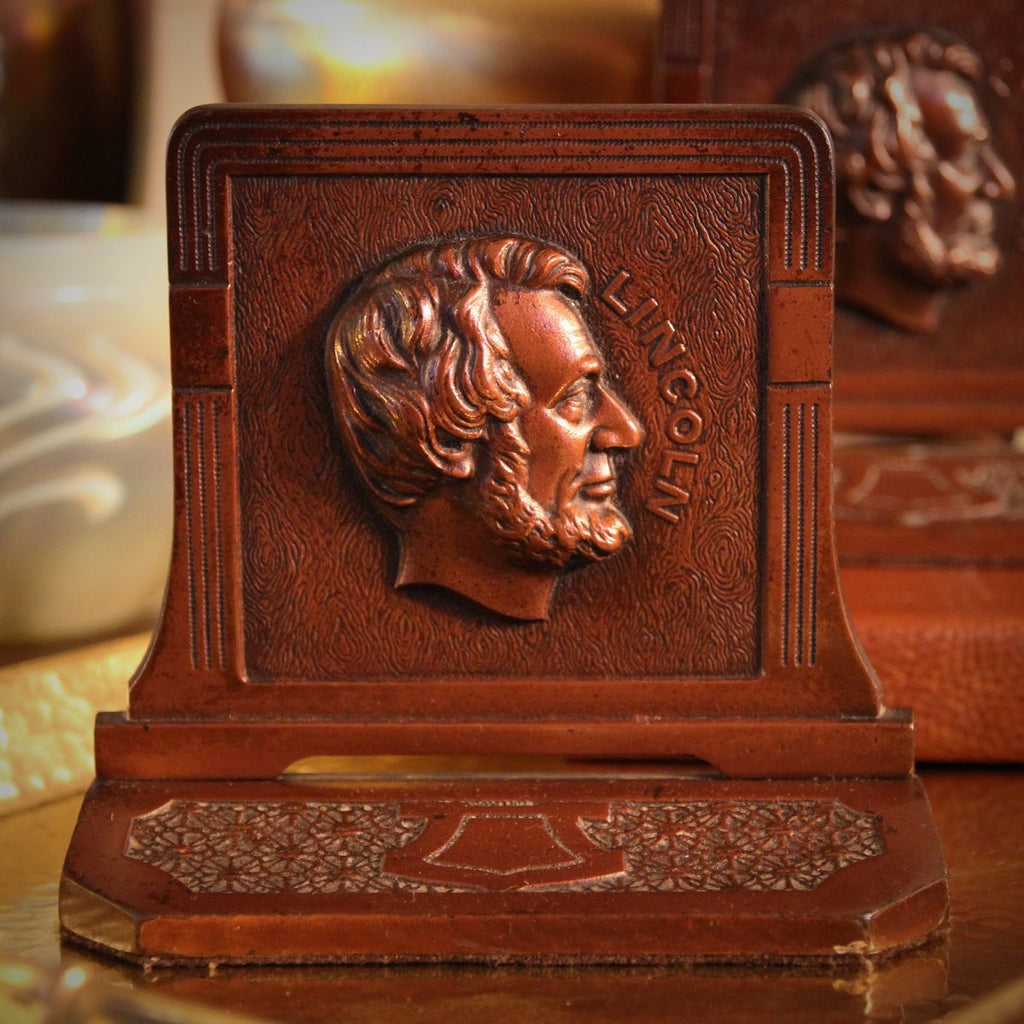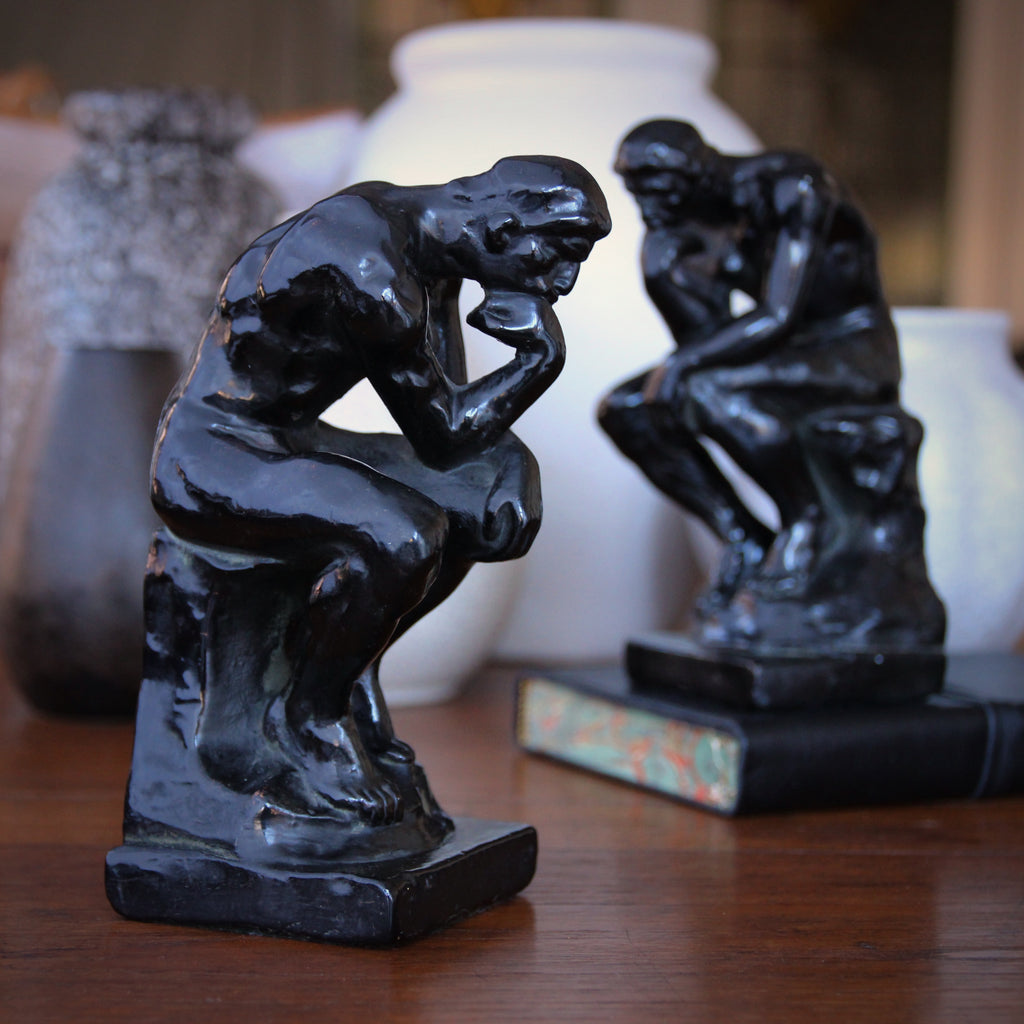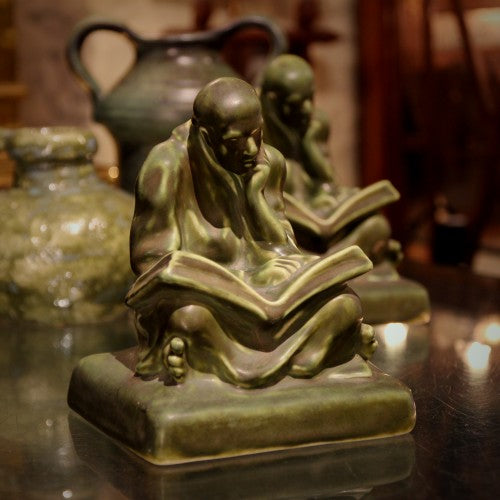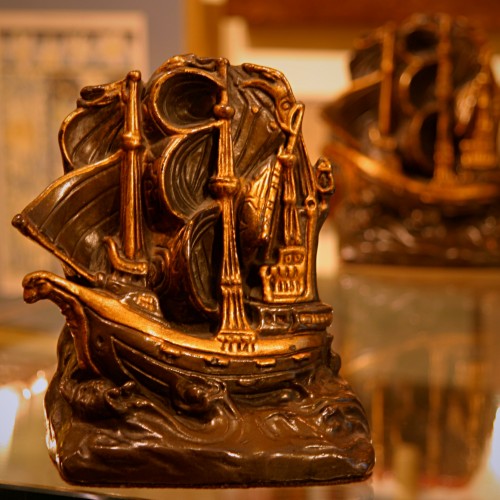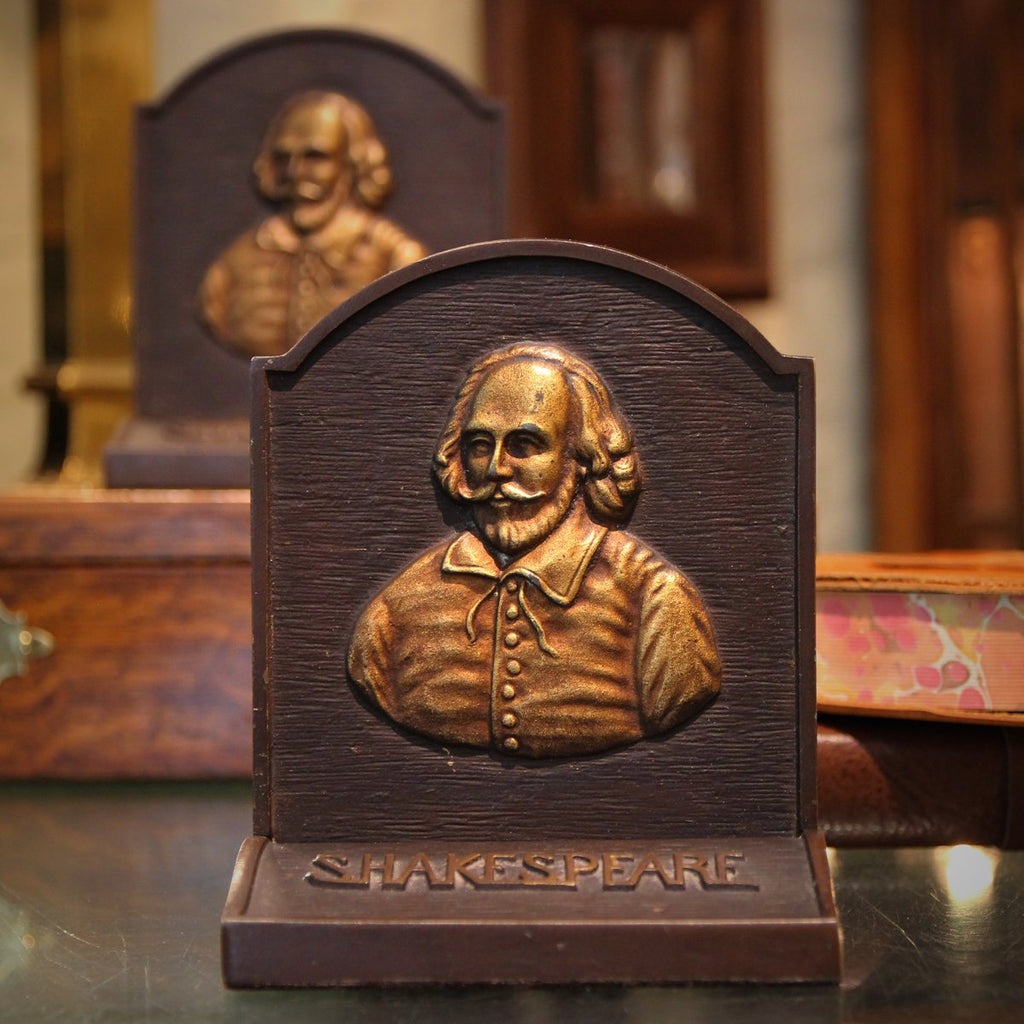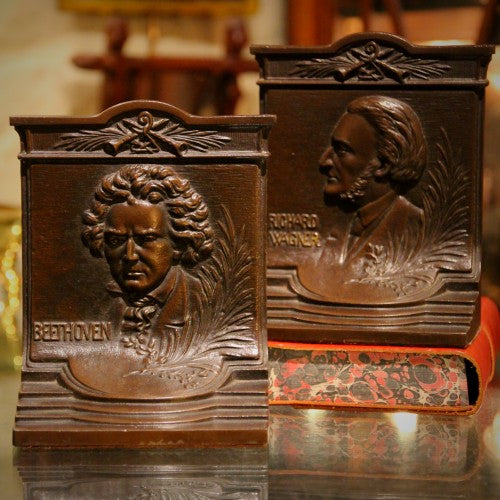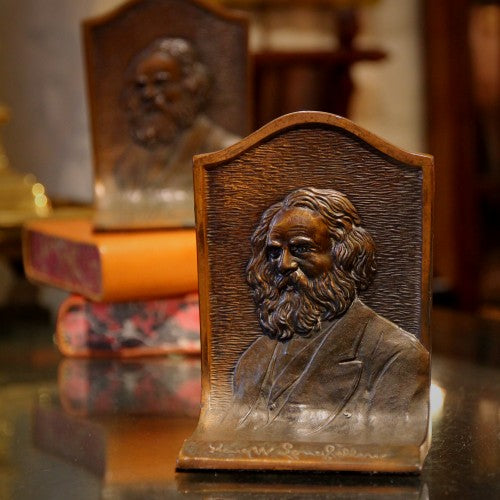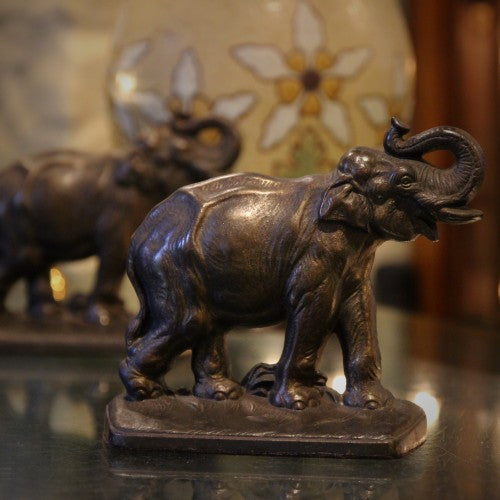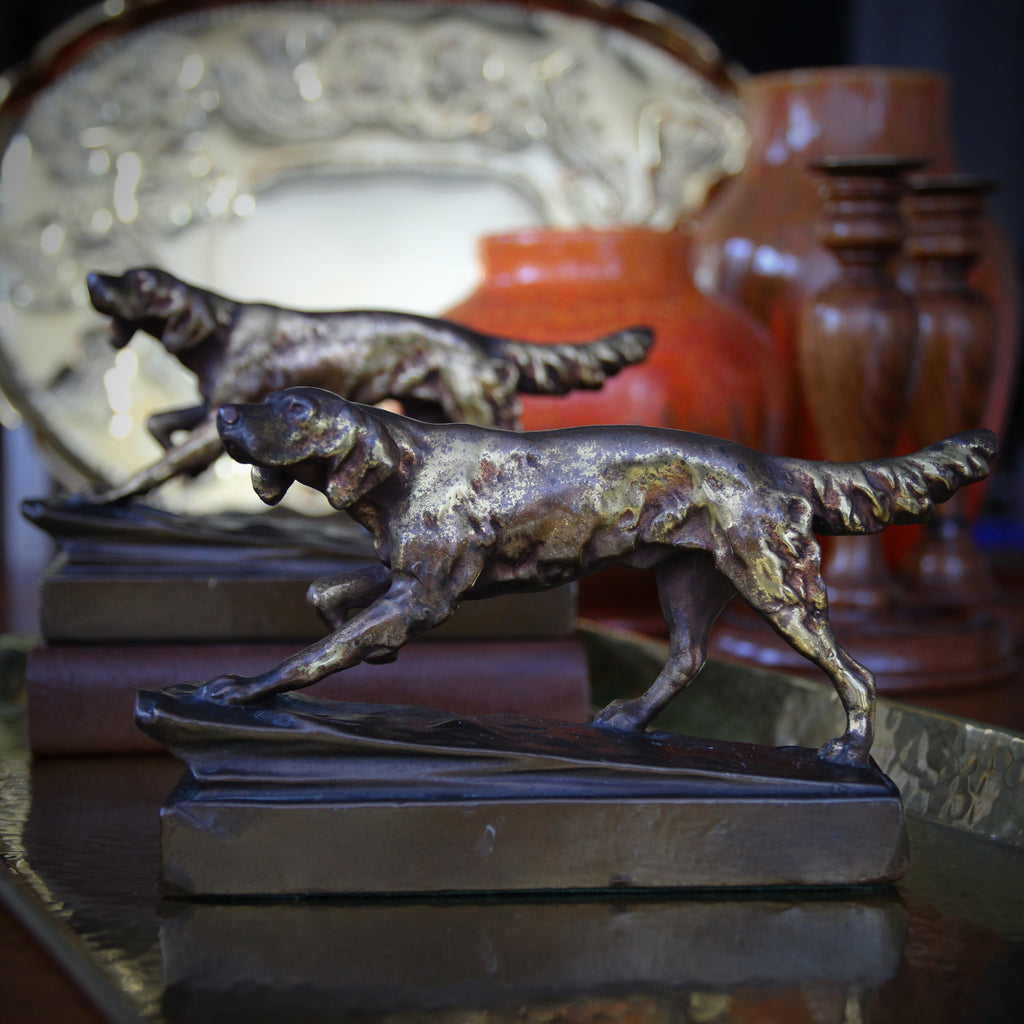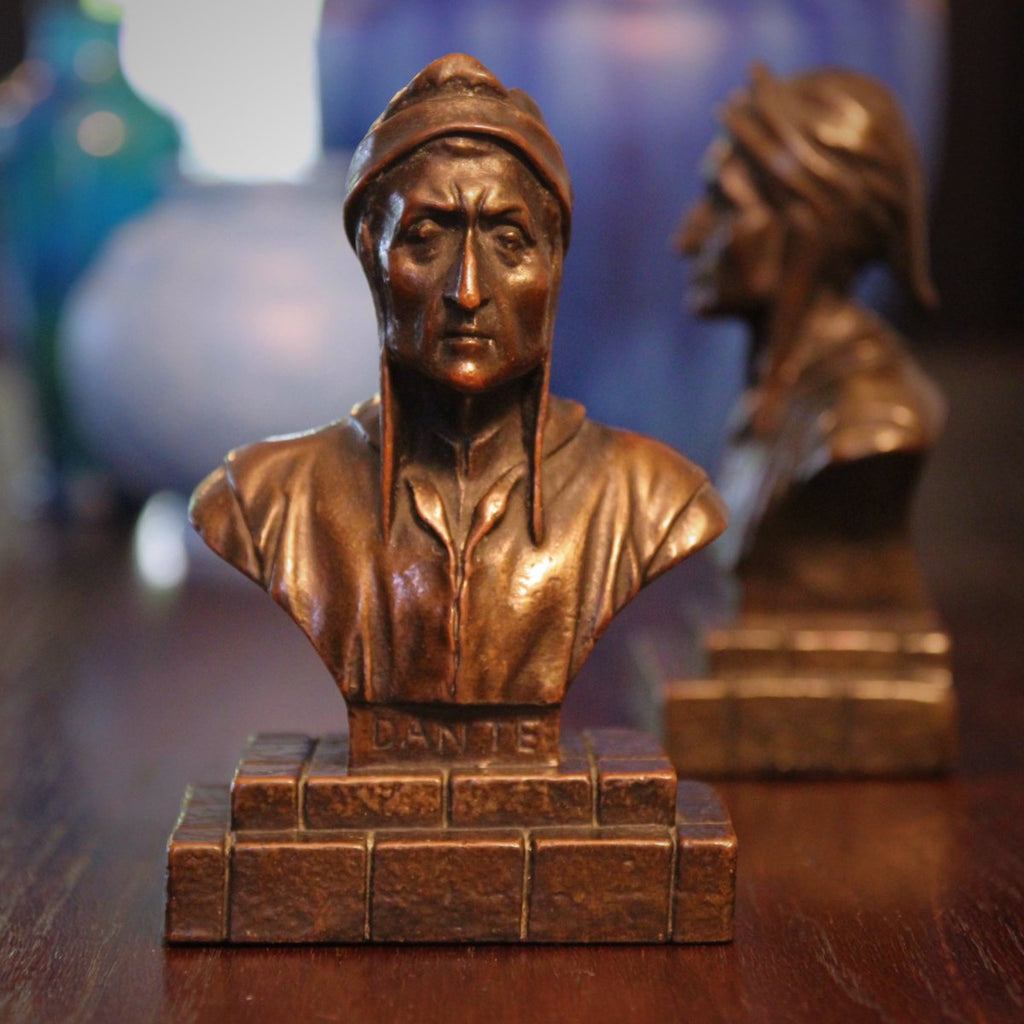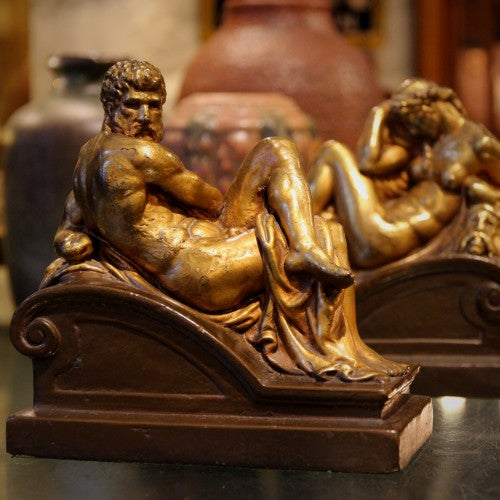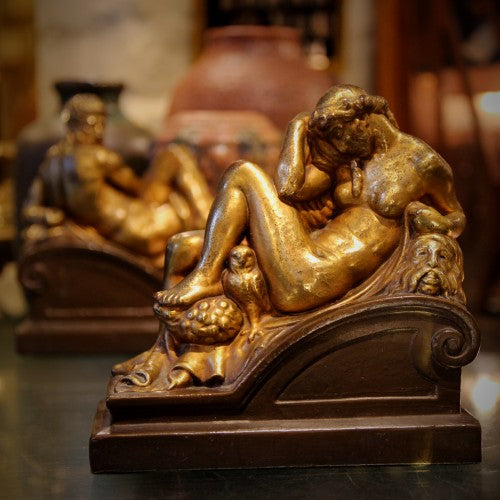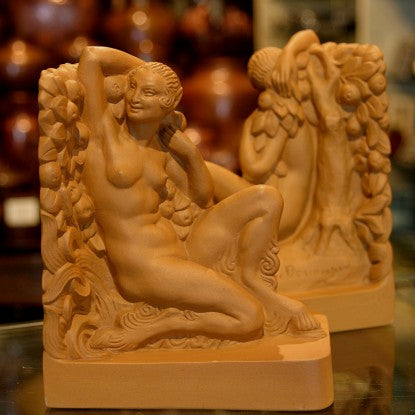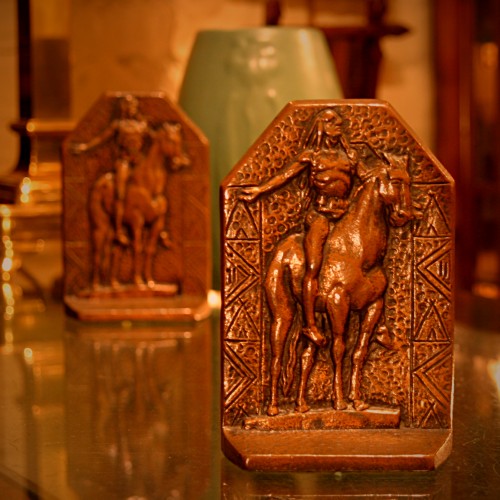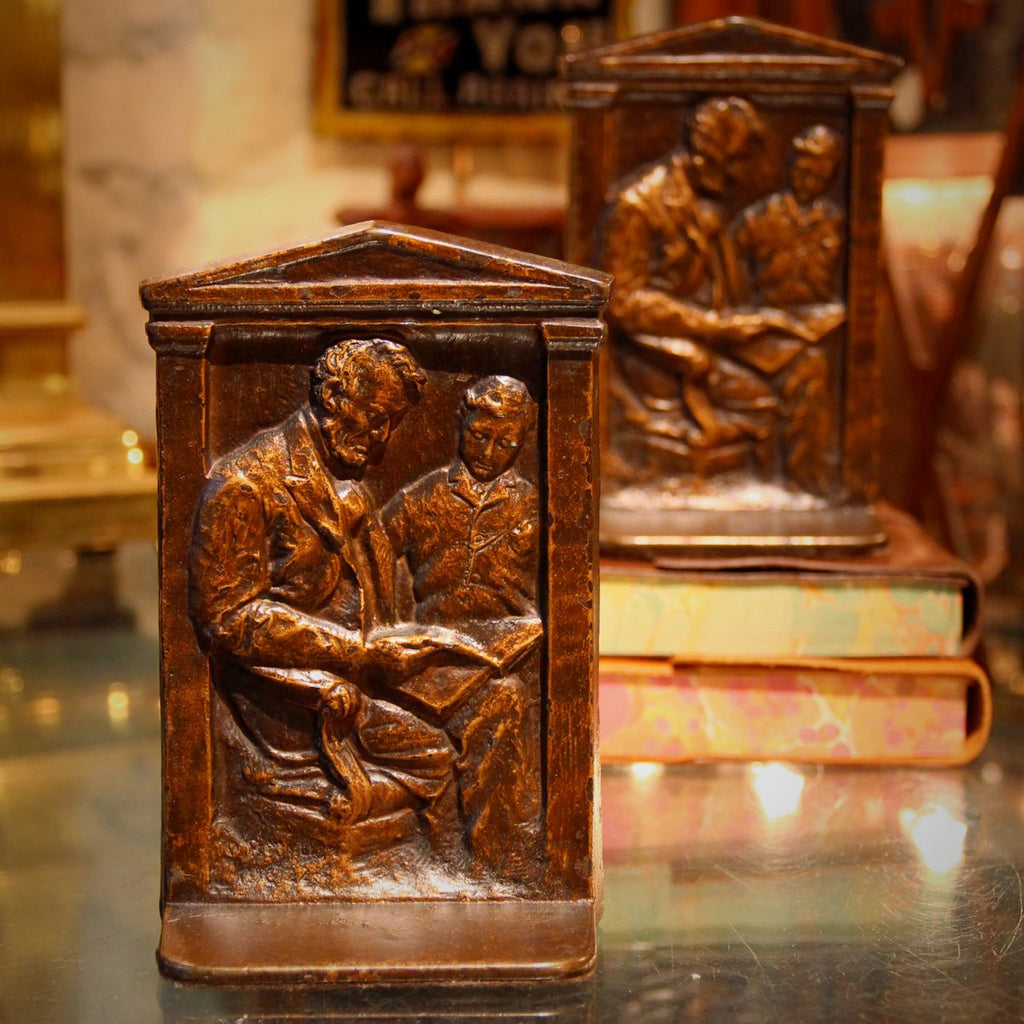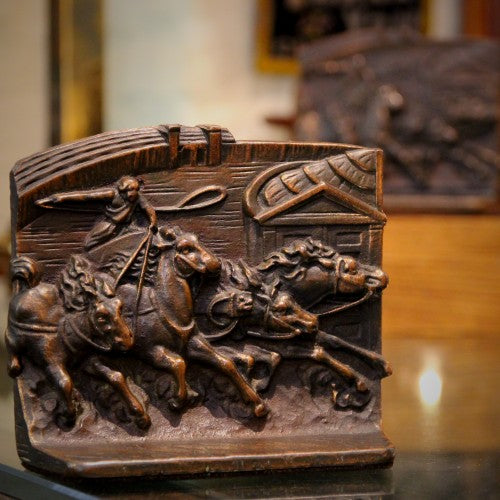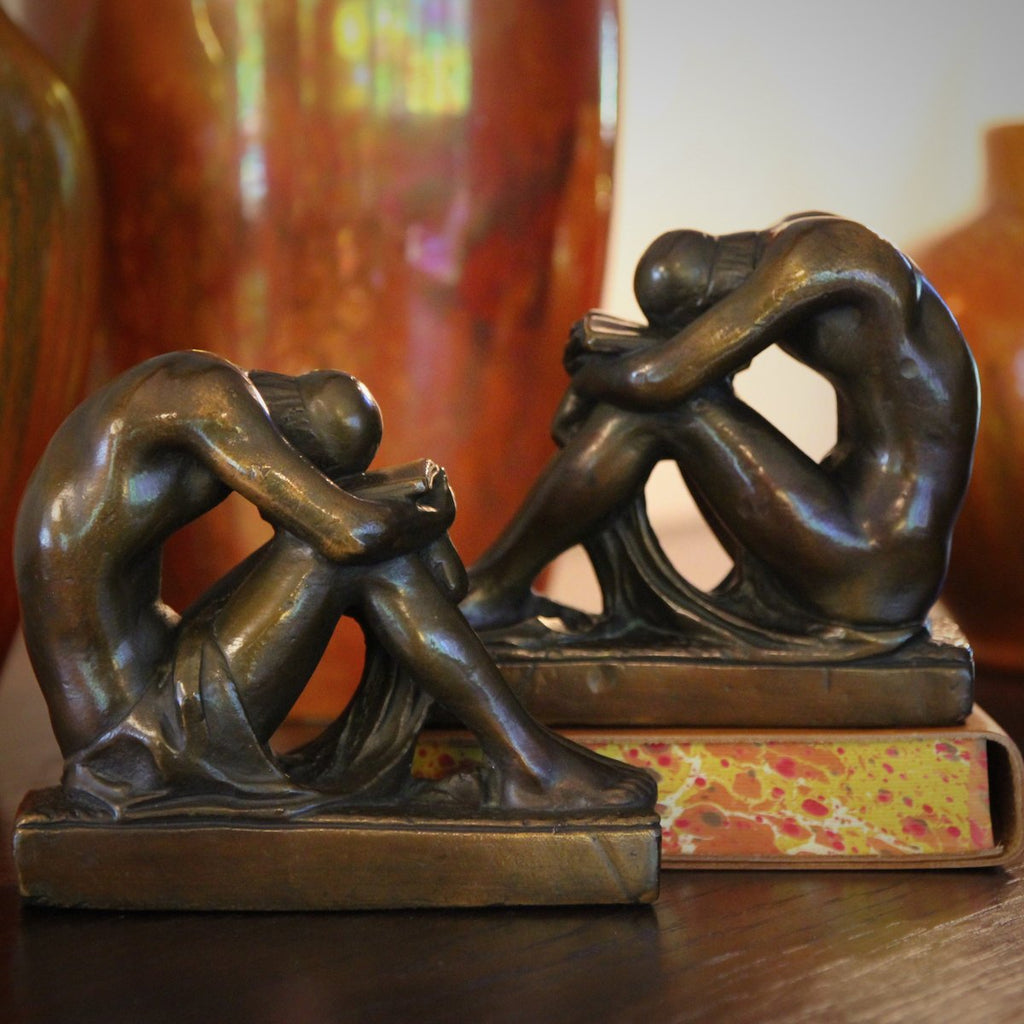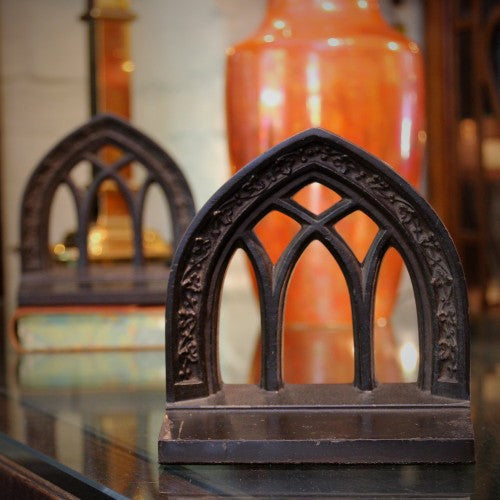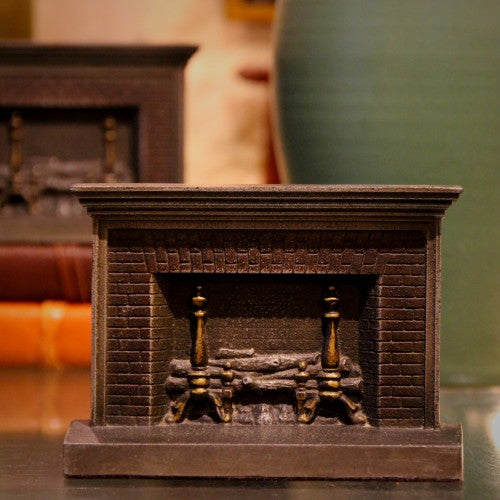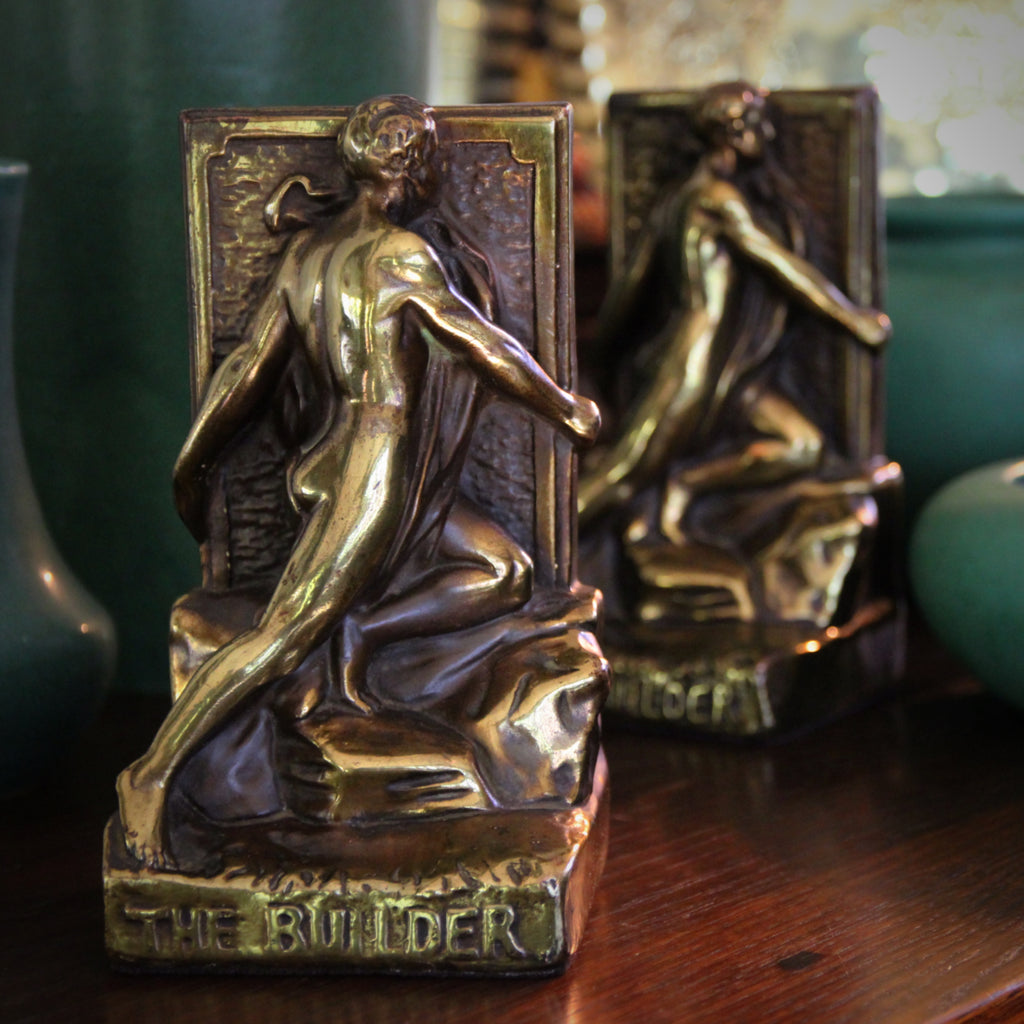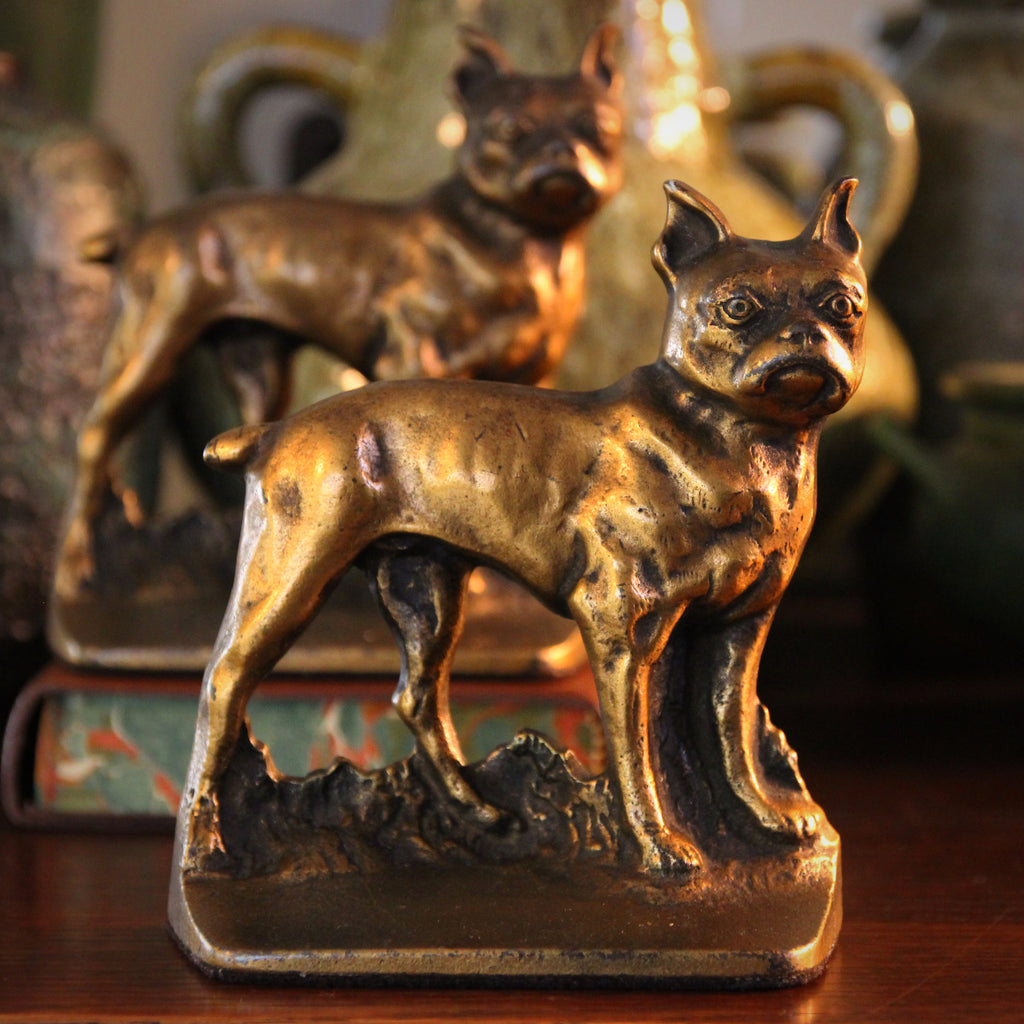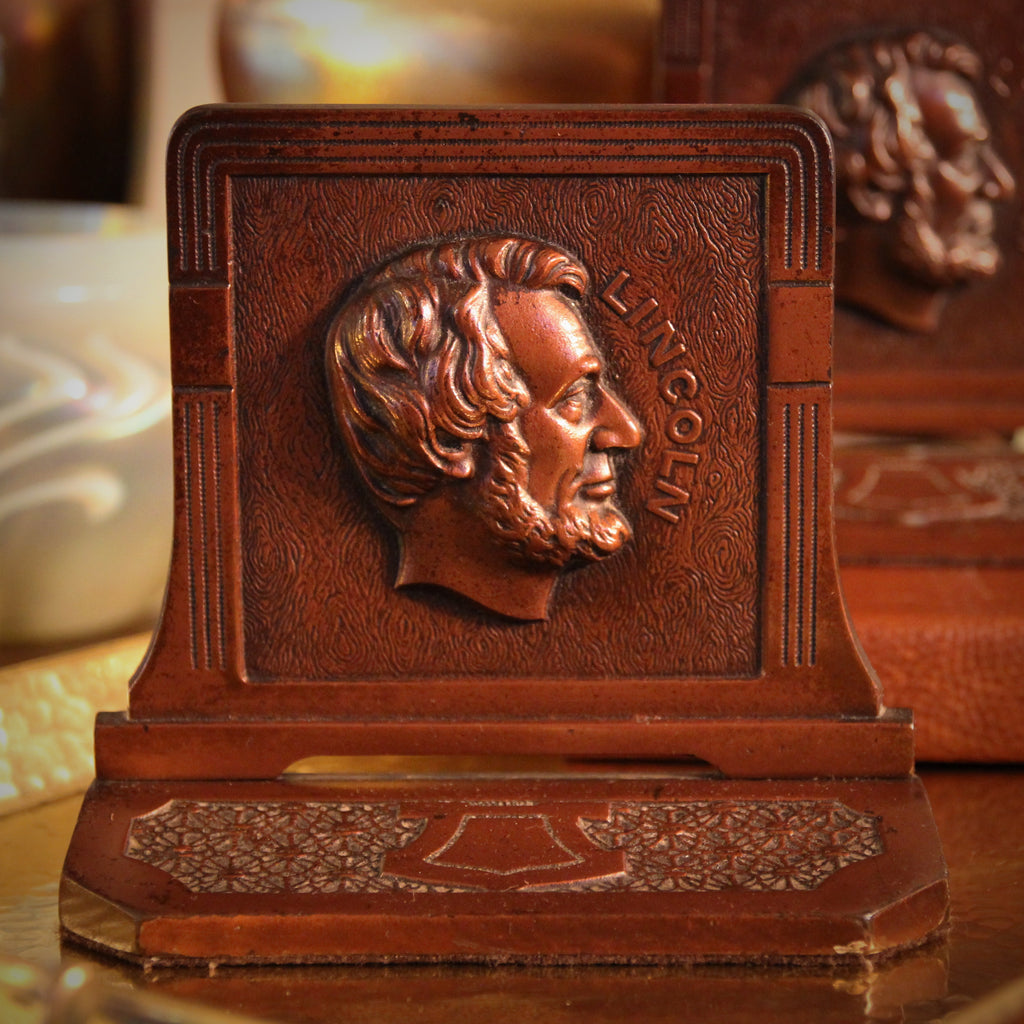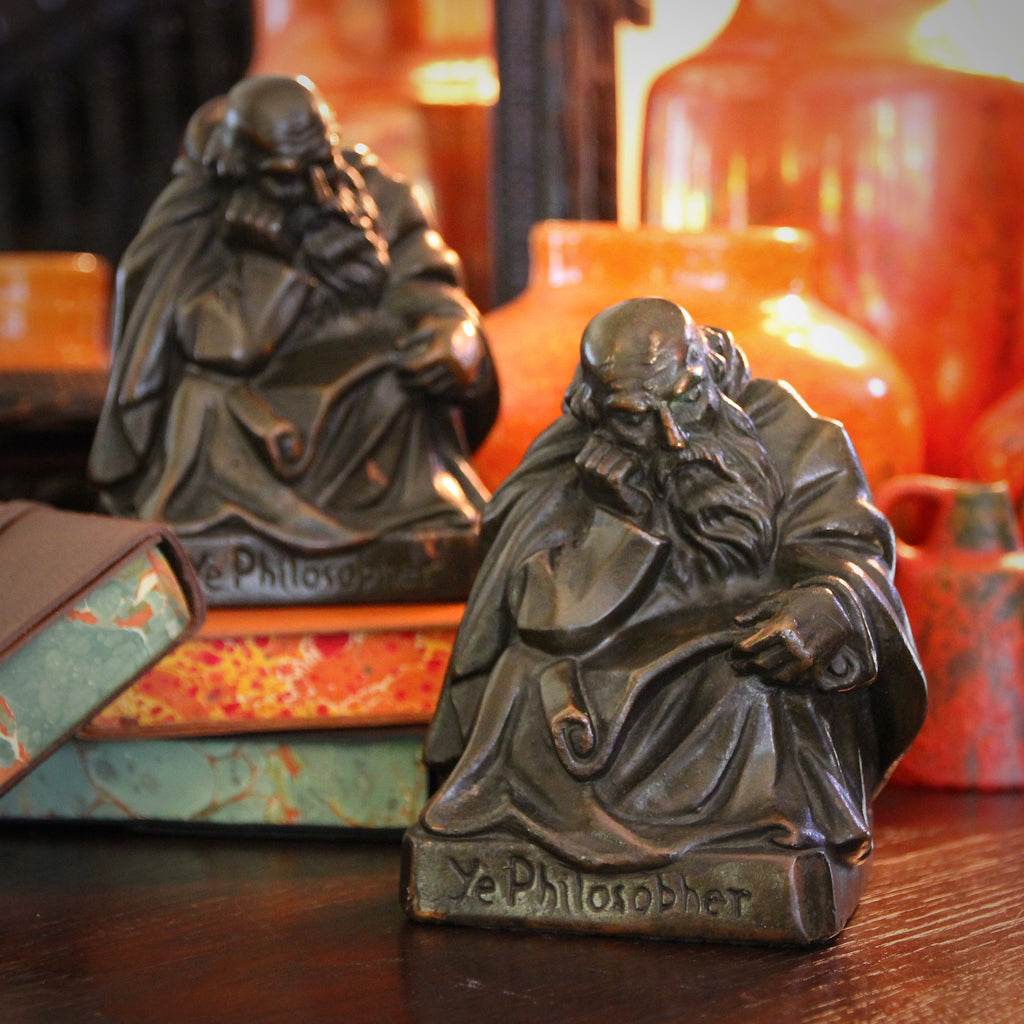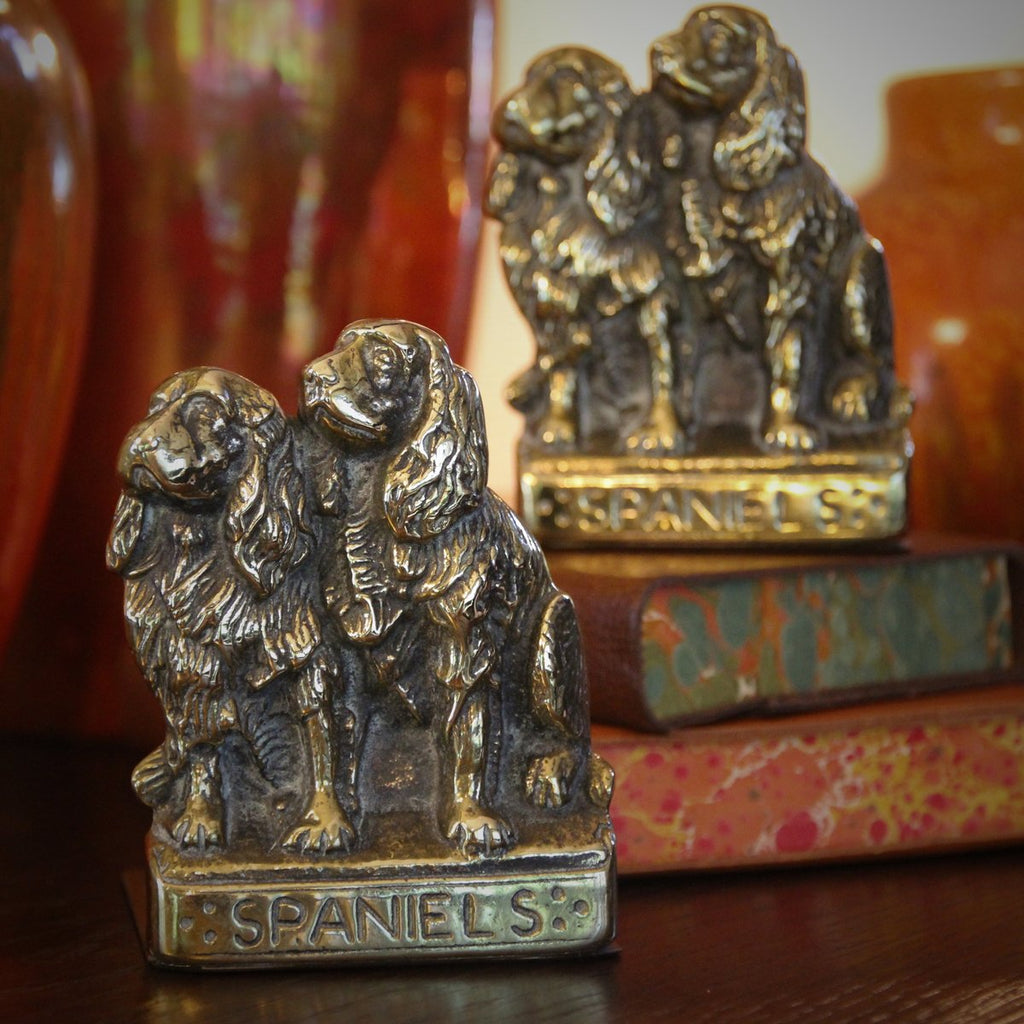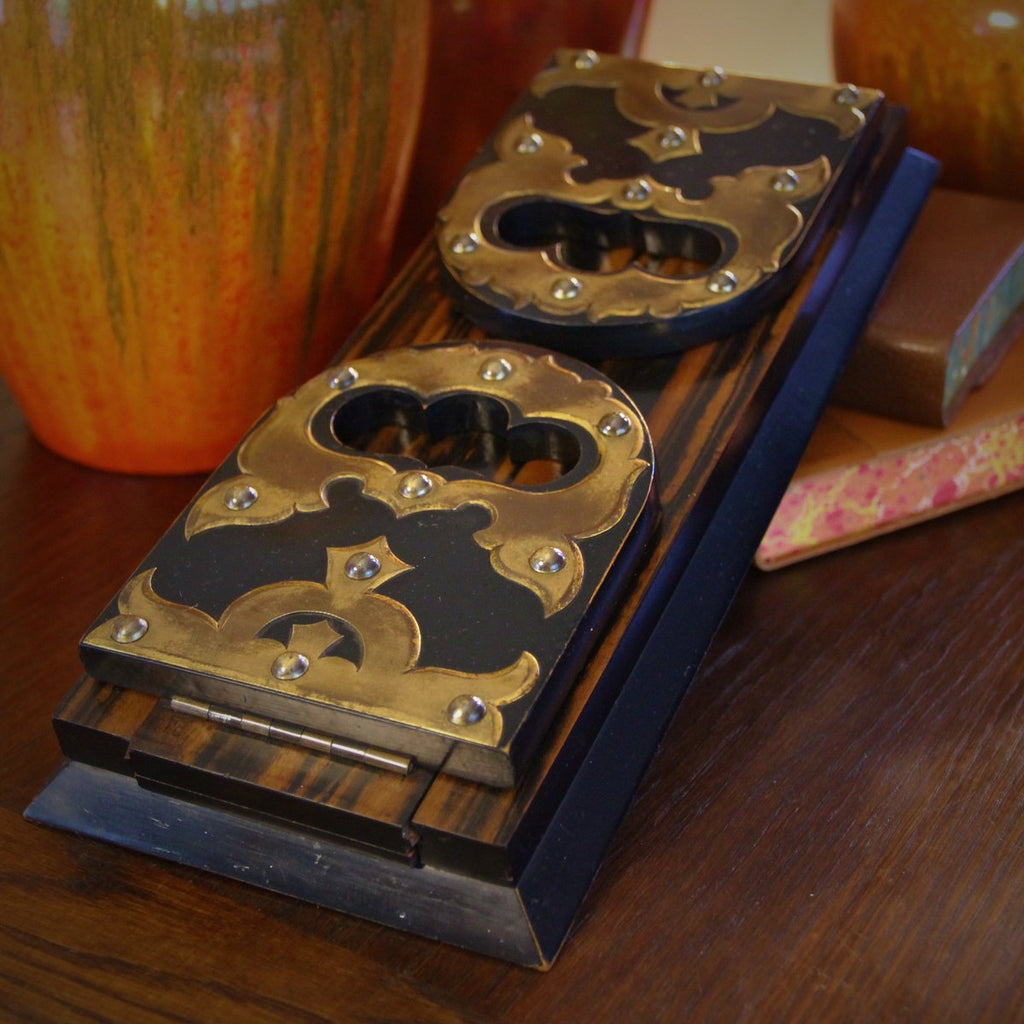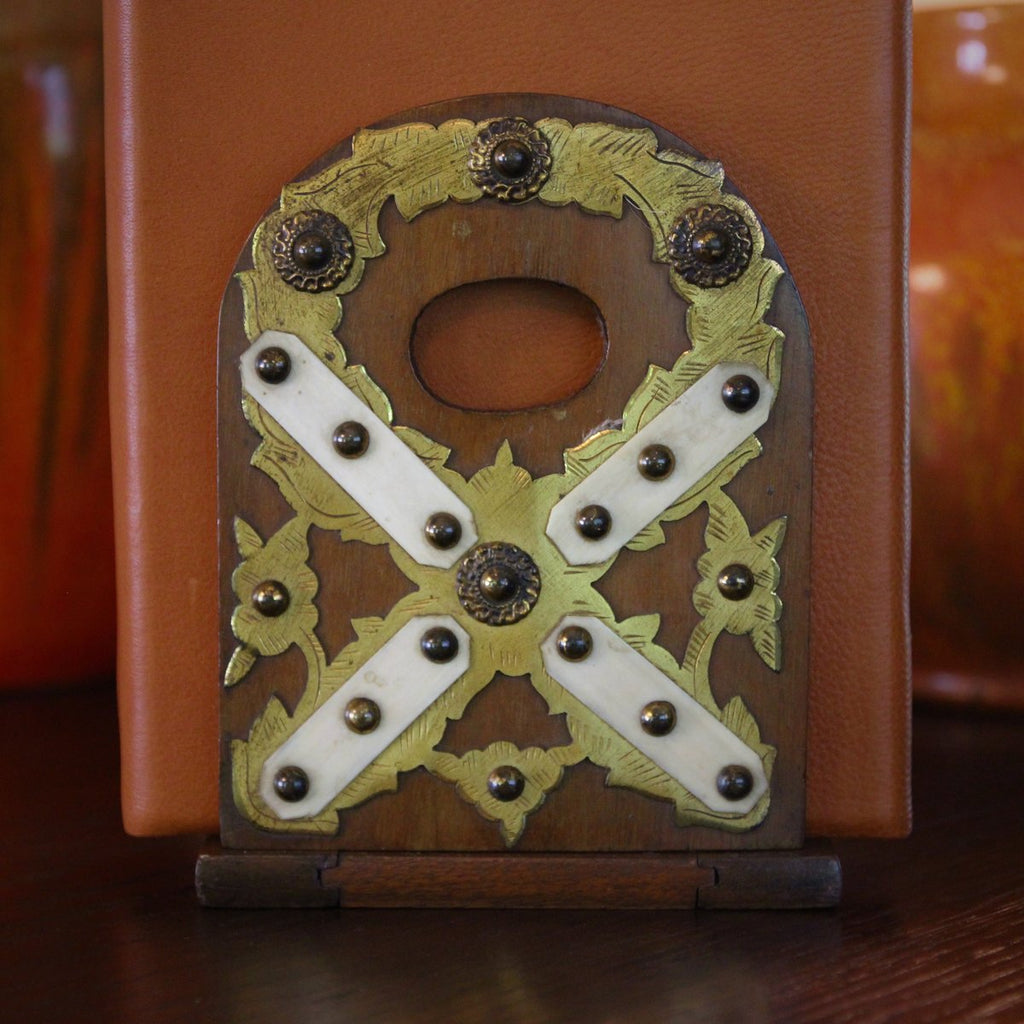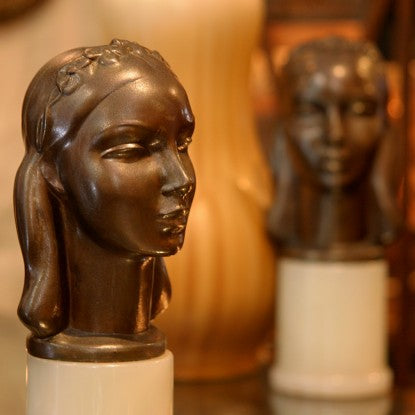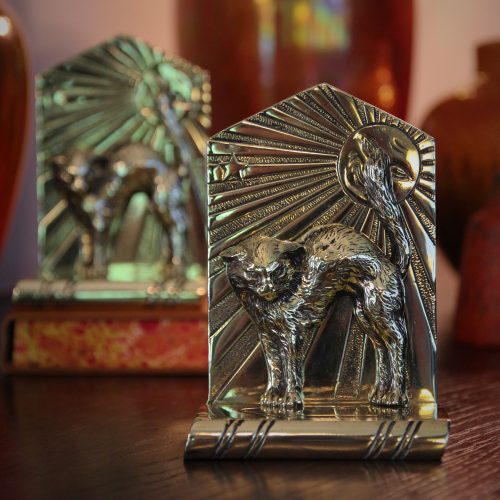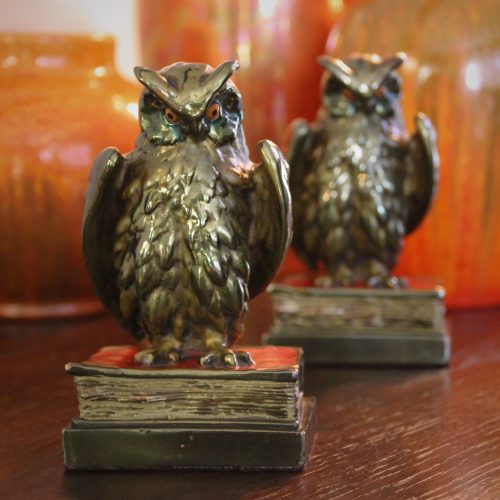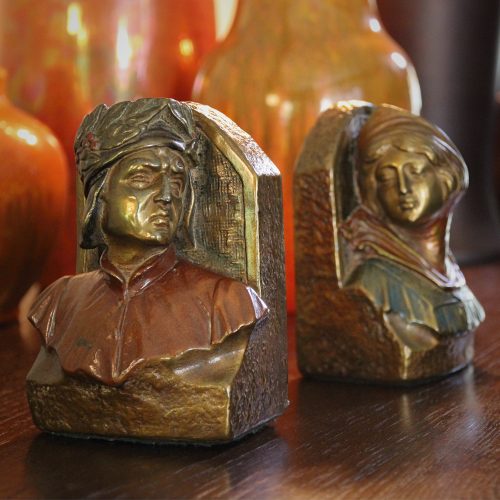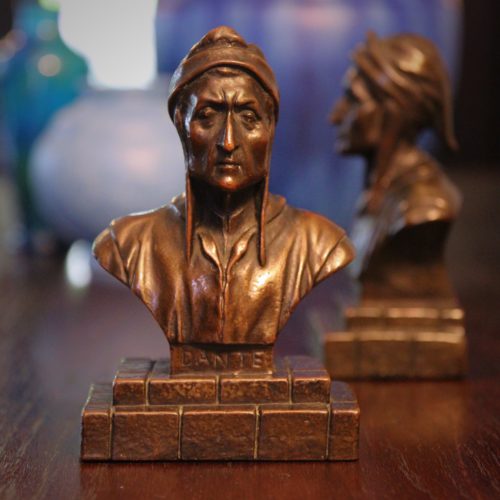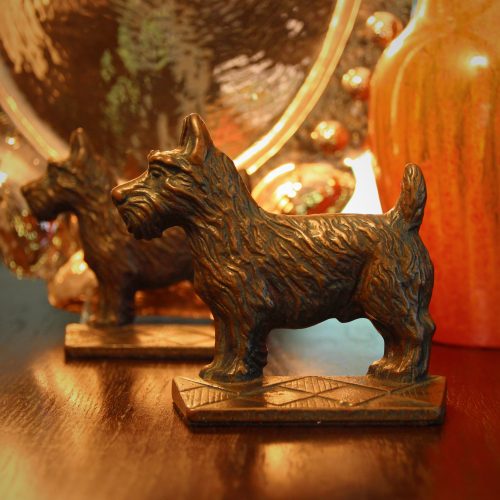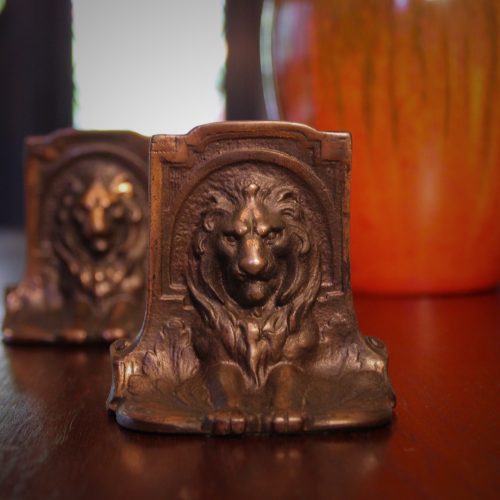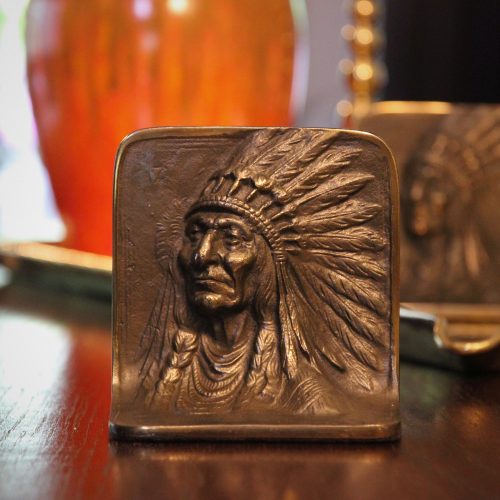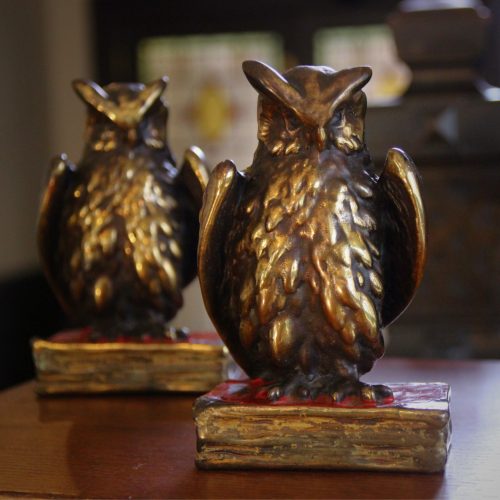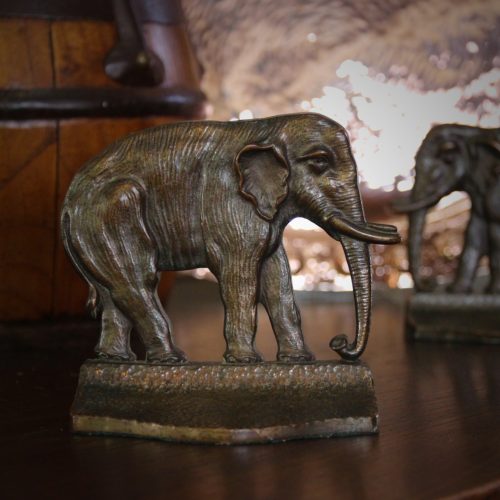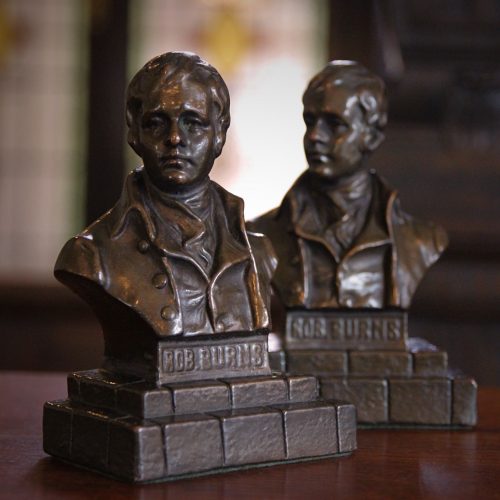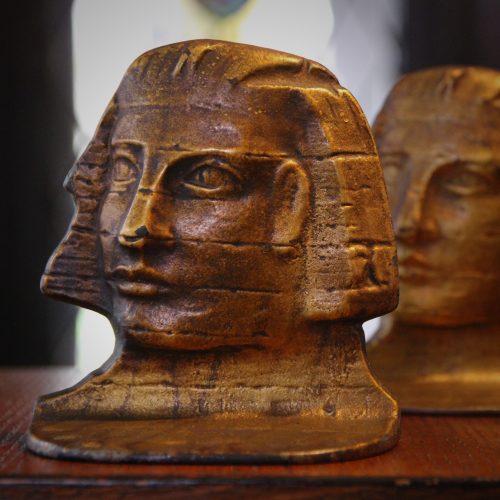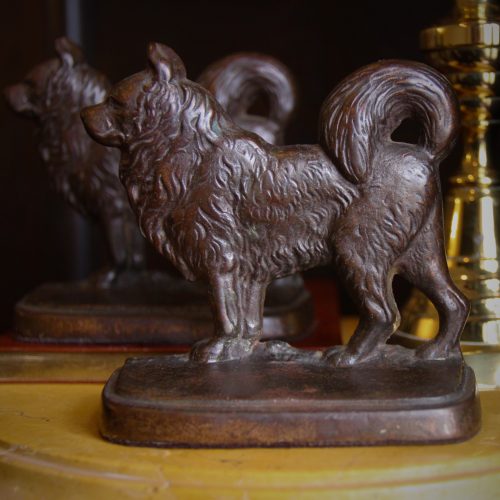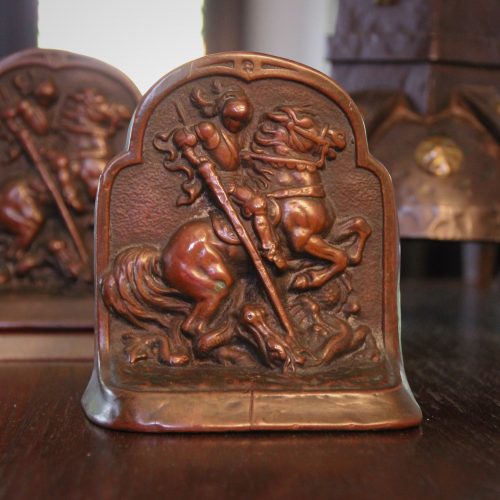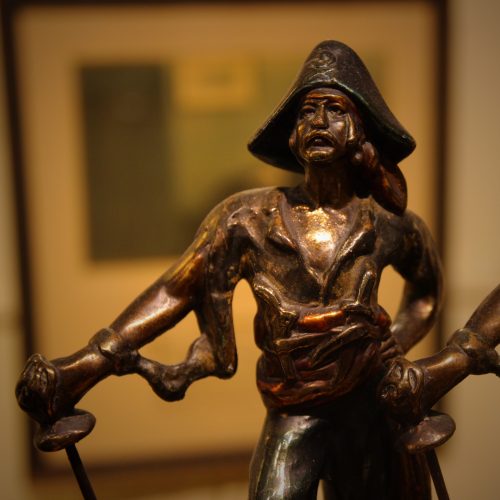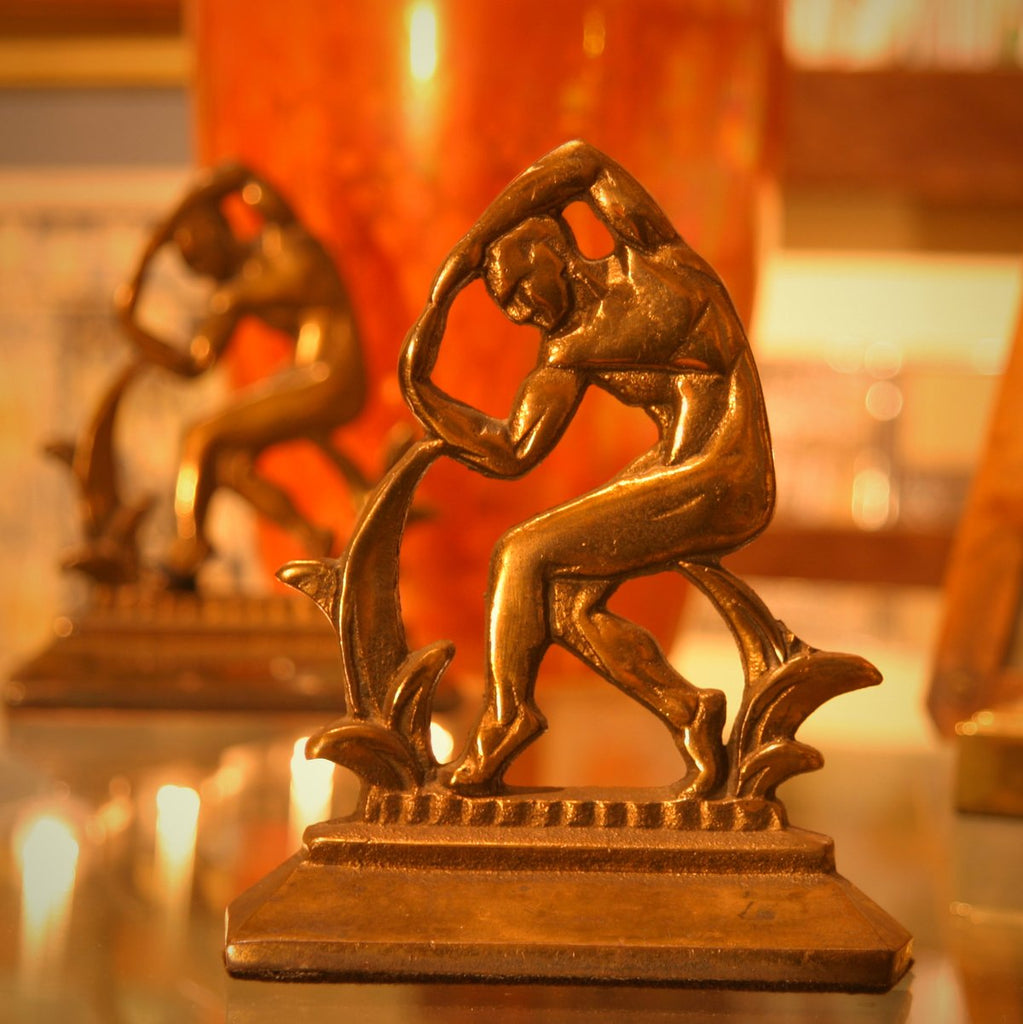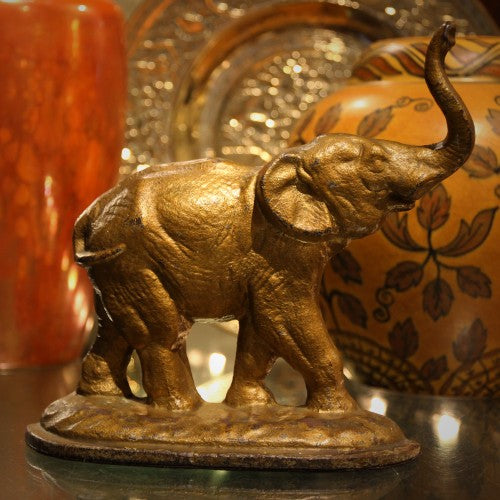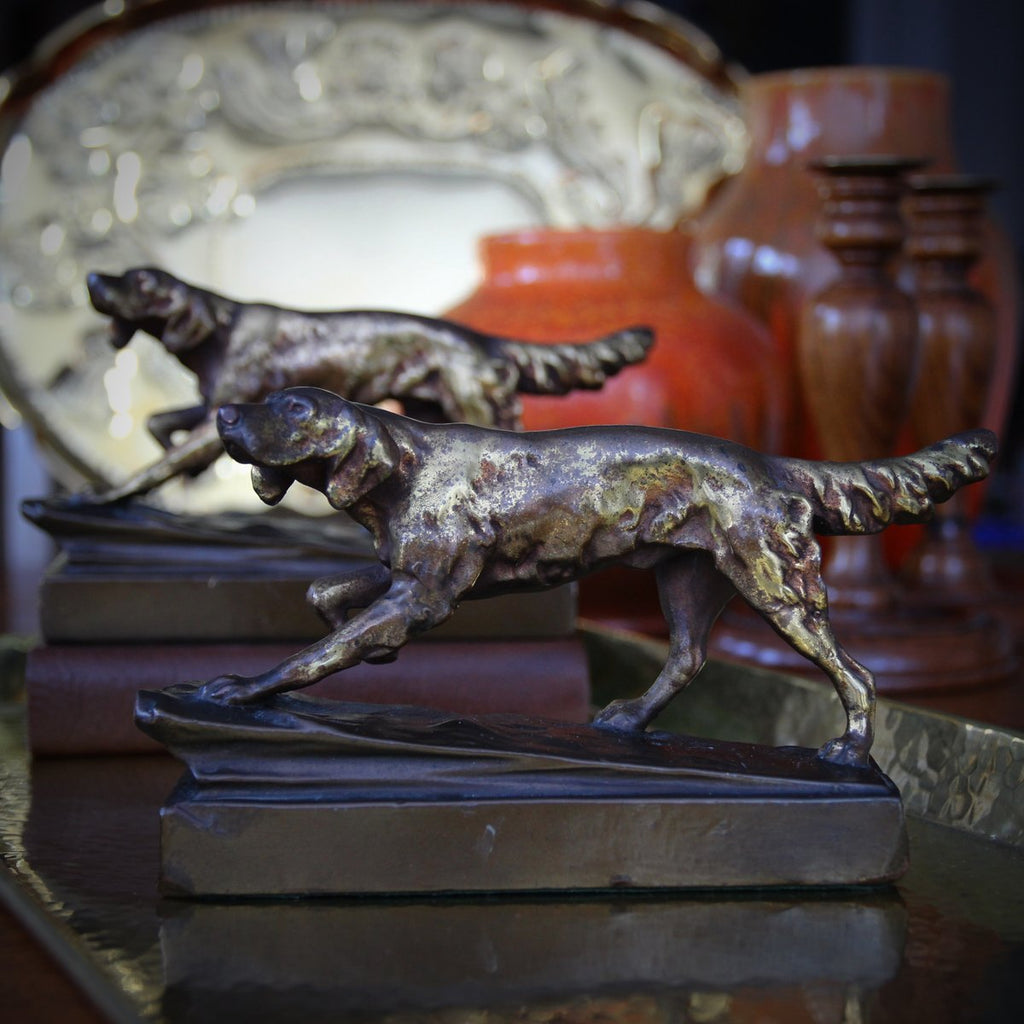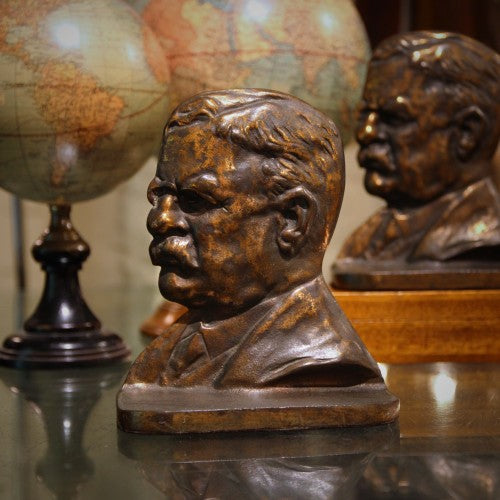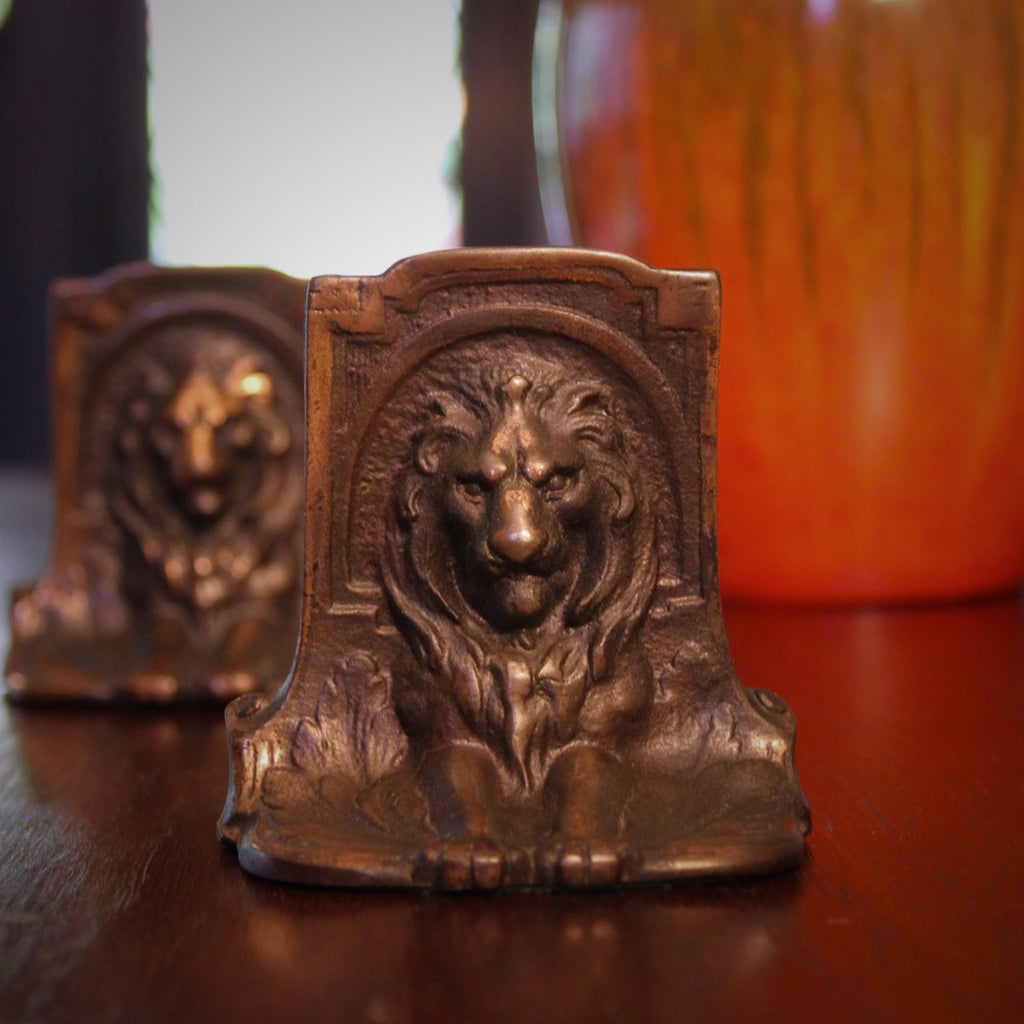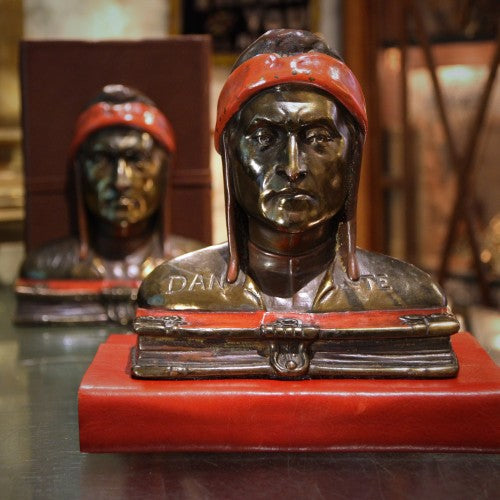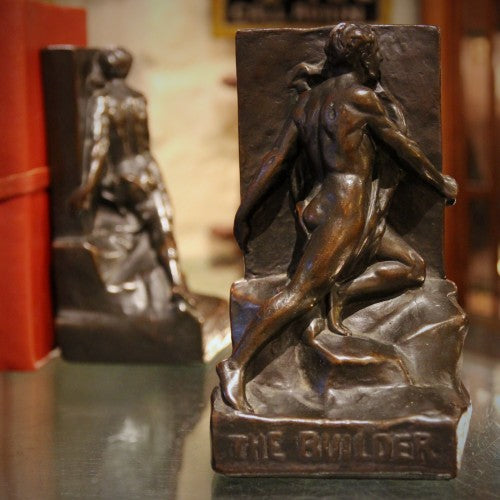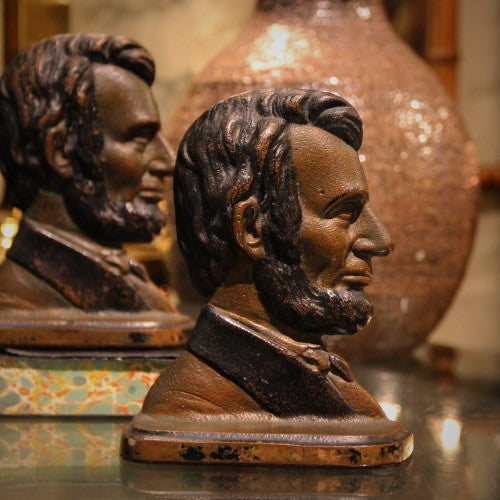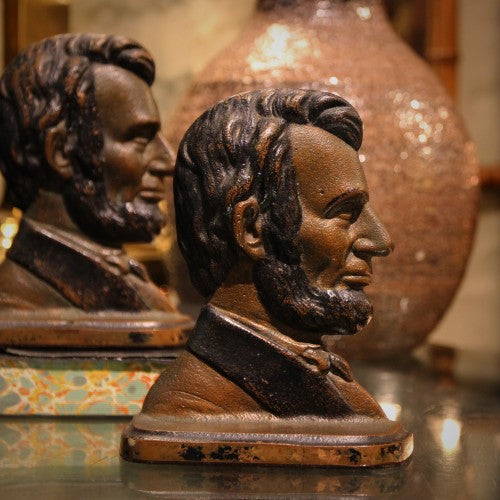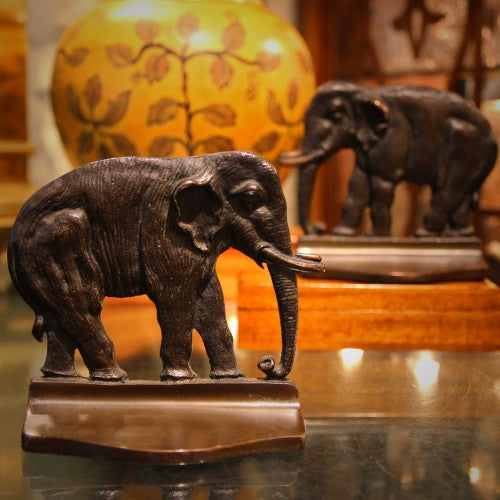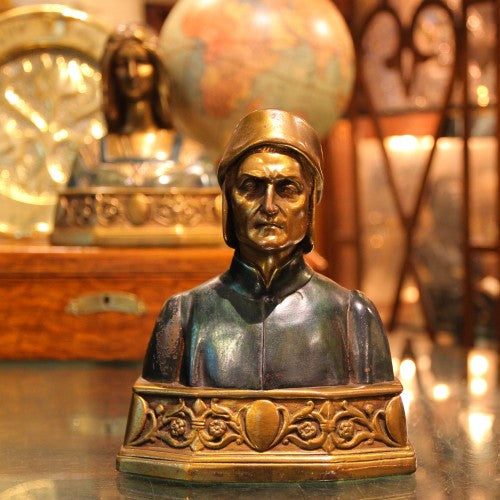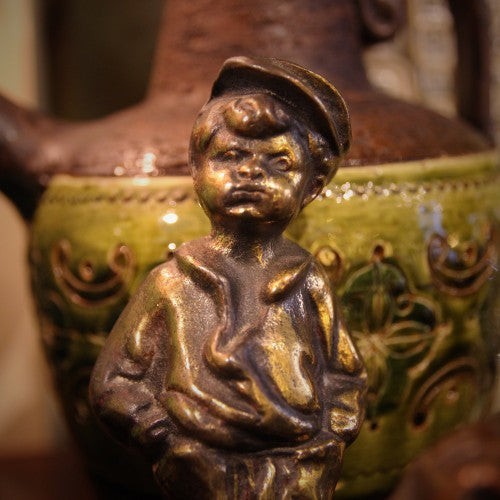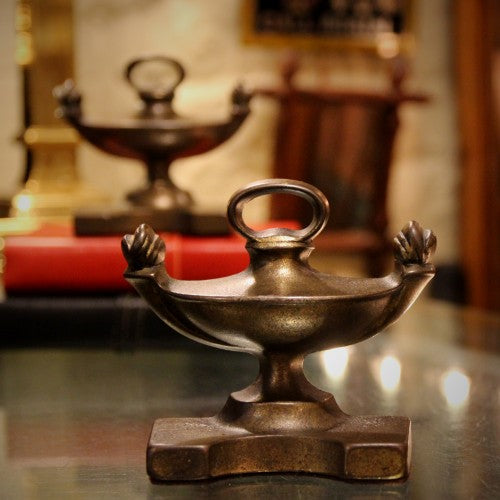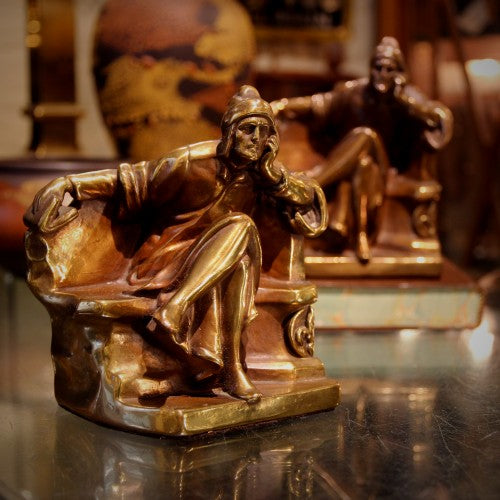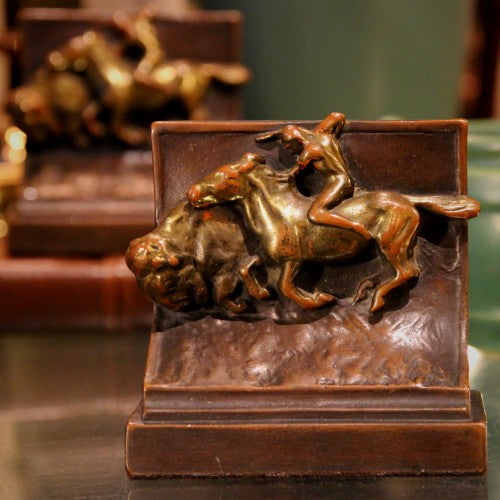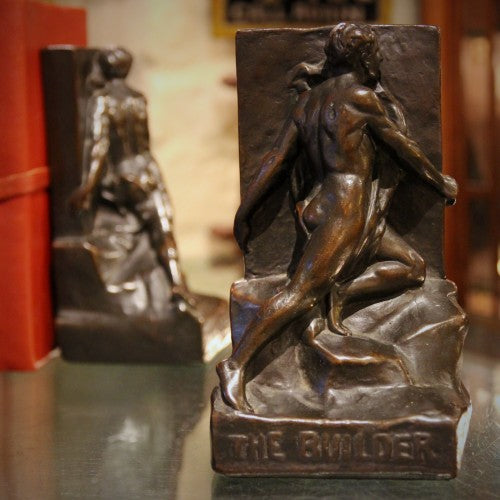JOURNAL — Bookends RSS
"The Song of Hiawatha" is an epic poem by Henry Wadsworth Longfellow, published in 1855. It follows a number of American Indian characters—notably the warrior Hiawatha and his lover Minnehaha—along the southern shore of Lake Superior. It was an immediate success, selling over 50,000 copies in its first two years, and it created an indelible impression of Indian life and people in the popular imagination. Critics view the poem as the romantic creation of a non-native writer and Longfellow's source materials and understanding of real Native American culture have been called into question. Nevertheless, it is a monumental work of American Romantic literature and it played an important role in Nineteenth Century popular culture. The bookends, above, present quotes from the...
The Lincoln Memorial
On this day in 1922, the Lincoln Memorial was dedicated and opened to the public on the National Mall in Washington D.C. In attendance was the 16th President’s only surviving child, 79 year-old Robert Todd Lincoln. Begun in 1914, with funds approved by Congress, the Beaux-Arts, Greek Doric Temple was designed by architect Henry Bacon […]
The Armada Sails
On this day in 1588, Spain’s Grande y Felicísima Armada—the “Great and Most Fortunate Navy,” the “Invincible Armada”—set sail from the port of Lisbon, en route to The English Channel and the (planned) overthrow of the British monarchy. The Armada was so large (130 ships, 30,000 men) that it took three days for the entire […]
Science and Study
It's graduation time! And—whether you're leaving high school, college or medical school—it's nice to commemorate the achievement. How about a pair of bookends? Handsome and practical, they will remind you of this special milestone—not to mention, the generous person who presented them to you. This pair of heavy cast-iron bookends were made in the 1920’s by Bradley & Hubbard (Meriden, Connecticut). Despite their drowsy appearance, these monks are fully able to hold up the heaviest of text books—while continuing their science and study. Please click on the photo to learn more about them.
Wisdom
Owls have long been associated with wisdom, knowledge, vision and judgement. The ancient Greek goddess of wisdom, Athena (after whom Athens is named), often was depicted with a little owl. The same is true of Minerva, Athena’s Roman version. And, in ancient times, an owl spotted during a time of crises was considered a very […]
To the Joust!
Noble steeds strain against the bit—eager for the tournament to begin. Atop them, mounted knights gird themselves for the battle, lances in-hand. Let this pair of bronze-clad bookends add a bit of majesty (or at least a little pomp) to your desk, den or library. Made in the 1920’s, they still retain an impressive portion […]
Precious Pups
In the late Nineteenth and early Twentieth Centuries, England was crazy for all themes Asian—tea, ceramics, wallpaper, even light opera. Apparently the infatuation continued through the Twenties and Thirties, as evidenced by these English cast brass Pekingese bookends. Crisply cast—from two separate “mirrored” molds—the sculptor artfully conveyed the “entitled personalities” of these precious pups. Please […]
The World’s Greatest Music. Ever.
On this evening in 1824, with his musical score positioned before him, composer Ludwig van Beethoven stood at the edge of the stage of the jam-packed Theatre am Kärntnertor in Vienna, Austria. The audience was abuzz and the largest orchestra ever assembled for the composer was at-the-ready, prepared to debut Beethoven’s newest (and final) work, […]
Holding Court
A regal lion holds court from this handsome pair of cast iron bookends, made in the 1920’s. Newly in-store, they’d be a great gift idea for your favorite Leo (which begins less than three months from now)—or person of any sun sign. Please click on the photo to learn more about them or come into […]
Steeling the Past
The worldwide Arts & Crafts movement—Art Nouveau, Jugendstil, Secessionist, Mission—shared many similarities, including the revival of earlier historical or aesthetic elements. One of the classic touchstones is The Gothic.
This pair of German Jugendstil bookends are made of hand-hammered steel, punctuated with riveted steel edging. Their thin profile makes them well-suited to a book collection with limited space for a thicker, heavier bookend. Please click on the photo above to learn more about them.
LEO Design's Greenwich Village store is now permanently closed. While we contemplate our next shop location, please visit our on-line store which continues to operate (www.LEOdesignNYC.com).
Follow us on Instagram: "leodesignhandsomegifts"
Follow us on Facebook: "LEO Design - Handsome Gifts"
Mucha in America
Alfons Maria Mucha (1860-1939) was born in Moravia, today a part of the Czech Republic. He went to high school at the "Gymnázium Brno" while he pursued his passion for drawing. He made money by singing in the Cathedral of Saints Peter and Paul (in Brno) where he was artistically inspired by the church's Baroque interiors and he befriended the great (future) Czech composer, Leoš Janáček. He took jobs as a decorative painter, mostly painting theatrical scenery. Eventually he was hired-away to paint stage scenery in Vienna—the cultural center of the Austro-Hungarian Empire. Mucha studied in Munich and Paris—where he stumbled upon a lucky break. While visiting a Paris print shop in 1894, he learned that the play Gismonda, staring...
Shakespeare’s Death
On this day in 1616, William Shakespeare, perhaps the world’s greatest-ever writer, died at 52 years of age. It was one month after signing his will—which began with a convincing proclamation of his vigorous health. While we don’t know how or why he died, one written account (half a century later) describes a night […]
Craftsman Copper
I really love hand-hammered copper—and this pair of American Arts & Crafts bookends really scratches that itch. Made around 1910, they boast varying hand-tooling techniques and are finished with a hand-painted emblem. Signed "Craftsman." See them in our on-line store by clicking on the photo above.
LEO Design's Greenwich Village store is now permanently closed. While we contemplate our next shop location, please visit our on-line store which continues to operate (www.LEOdesignNYC.com).
Follow us on Instagram: "leodesignhandsomegifts"
Follow us on Facebook: "LEO Design - Handsome Gifts"
Where the Buffalo Roam...
A pair of dramatically-sculpted bison will stampede across your bookshelf in this handsome pair of bronze-clad bookends, made in the 1920's. Enormous herds of bison roamed the American grasslands until the Nineteenth Century, when they were hunted to near-extinction. Today, small herds have made a comeback—mostly in National parks. Weighing upwards of 2,200 pounds, the animal is the largest "bovid" in the world and the largest wild land animal in the Americas. Please click upon the photo above to learn more about these bookends. LEO Design's Greenwich Village store is now permanently closed. While we contemplate our next shop location, please visit our on-line store which continues to operate (www.LEOdesignNYC.com). Follow us on Instagram: "leodesignhandsomegifts" Follow us on Facebook:...
Notre Dame de Paris
Notre Dame de Paris is one of the World's great cathedrals. The name means "Our Lady of Paris" and refers to the Blessed Virgin Mary. Construction was begun in 1163 and continued for the next 182 years. It was built in the "new" French Gothic style on the Île de la Cité—a natural island floating within the Seine—which was the defensible center of Medieval Paris. The building, including its many gargoyles and chimera, was originally colored though (after 800 years) the paint has mostly worn off. And the structure is the first building in the world to employ "flying buttresses"—the arched ribs which hold-up the cathedral's walls. Two bell towers stand at the front of the church. In the Southern...
Lincoln’s Last Night
On this day in 1865—at 10:15 pm—beloved president Abraham Lincoln was fatally shot by actor, racist and Confederate patriot John Wilkes Booth. Lincoln died the next morning at 7:22. Five days earlier, Confederate general Robert E. Lee had surrendered to Union general Ulysses S. Grant, thus ending the Civil War. Booth was bitter over the […]
Thinking about Spring
Rodin first created "Le Penseur" in 1880 as part of a larger sculpted grouping called "The Gates of Hell." The work was based on Dante's The Divine Comedy. It wasn't until 1904 that the first large stand-alone casting was made—and the broad public got its first exposure to a work which perfectly suited the times. Psychology increasingly was viewed as a legitimate science and the public was intrigued with the human mind and the theories of Sigmund Freud. "The Thinker" became an icon of the Turn-of-the-Century zeitgeist. The bookends shown above were made in the 1920's—when "The Thinker" was still a relatively recent novelty. First, an artful and accurate model—which captured the spirit and energy of Rodin's original—had to be sculpted. From this...
A Monk Reading
Reginald Guy Cowan was born in 1884 in East Liverpool, Ohio—at the time an important center of American ceramics production. His father worked as a pottery designer. While Cowan was still a boy, his family moved to Syracuse, another pottery-producing center. Cowan was trained at the New York State School of Clayworking and Ceramics, a […]
International Children’s Book Day
Today is Hans Christian Andersen’s birthday—as well as International Children’s Book Day. Begun in 1967, the day is dedicated to promoting books and reading amongst young people. Each year a different country is asked to “host” the celebration; that country picks a theme, organizes events, and selects a local author and illustrator (who designs that […]
World Theatre Day
Today is World Theatre Day, celebrated each 27 March. Each year, an internationally-recognized theatre luminary is selected to compose and circulate an International Message, reflecting on the importance of theatre to the world and human culture. This year’s Message is written by Polish stage director Krzysztof Warlikowski. As theatre luminaries go, who could top The […]
Farewell, Beethoven
Ludwig von Beethoven—perhaps the world’s greatest composer—was born to a family of musicians in Bonn, Germany in 1770. Both his father and grandfather were singers and musicians. Ludwig’s father, Johann, was his first piano teacher and, by all accounts, a strict one. Johann recognized his son’s performing genius and attempted to exploit his talent as […]
Listen, my Children, and You Shall Hear. . .
Henry Wadsworth Longfellow was born on 27 February 1807 in Portland, Maine. An industrious and able student, with a love of books and a talent for writing, he mastered Latin while still a young boy. At 15, he started at Bowdoin College where he befriended Nathaniel Hawthorne, who was to become a lifelong friend. While in […]
Trumpeting His Arrival!
With a trumpet blast, this handsome tusker makes his recent arrival known! Though going-on ninety, he’s no worse for wear—in fact, he’s developed the wonderful patina of time. And he’ll work as hard as ever, holding-up your favorite books with style and confidence. Please come into the shop to see him in-person or click on […]
It's the Year of the Dog!
Gung Hay Fat Choy! And a happy Year of the Dog! The dog is the eleventh sign in the lunar zodiac—and a popular one, too! And this year, we celebrate the "Earth Dog." Known for their tenaciousness, dogs won't let go of their bone once they have it. And this fierceness translates to their personal loyalty as well; they will never abandon their friends, famiy or work. For this reason, dogs are often sought for their good advice—good honest advice. At times, this brutal honesty can be mistaken for brusqueness. In truth, dogs just want their critiques to help improve people and situations. Despite their popularity, and the confidence they engender, dogs are often quite anxious deep inside. Dogs get...
Il Poeta
Durante degli Alighieri—best known as “Dante”—was born in Florence, Italy about the year 1265 (the best estimate of literary scholars). He is considered the greatest-ever writer in the Italian language and, indeed, is amongst the most important poets in the world. His signature works, The Divine Comedies, trace his travels through the Inferno (Hell), Purgatorio, […]
Day and Night
Alongside his buxom companion, “Day” rests also atop the tomb of Giuliano de’ Medici, Duke of Nemours. Carved by Michelangelo between 1526 and 1531, this muscular, male nude has been described “as intensely alert as a recumbent form can be.” “Day” and “Night” are but two of seven sculptures by Michelangelo to be found in […]
Night and Day
Long before Cole Porter wrote his brilliant and witty tune, another (earlier) artistic genius explored the themes of “Night and Day.” Michelangelo Buonarroti—premier Florentine Renaissance giant—sculpted a pair of imposing marble nudes which he draped upon the tomb of Giuliano de’ Medici (Duke of Nemours) in the Basilica di San Lorenzo in Florence. Created between […]
The Satyress
A Satyress is the female version of the Satyr—in this case, a human woman, usually bare-breasted, with the legs of a goat. While male Satyrs are commonplace in art, architecture and design, female Satyresses are not. Because the male creatures are usually associated with drunkeness, mischief and raw, animalistic sexuality, perhaps Classical and Rennaisance artists avoided […]
Antoine-Louis Barye
Antoine-Louis Barye was a Parisian Animalier—a sculptor of animals. He was born in 1796 and got his start as an apprentice under Napoleon’s goldsmith. In 1816, he was admitted to the Ecole des Beaux Arts where he pursued sculpture—initially honing his talent with medallions and bas relief works. Barye enjoyed spending time sketching animals of the […]
Appeal to the Great Spirit
American sculptor Cyrus Dallin (1861 – 1944) unveiled his masterpiece, “Appeal to the Great Spirit,” in Paris in 1909—where it won the gold medal at that year’s Paris Salon. It became popular immediately—especially in America—and the image has been used everywhere from advertising to album covers. Smaller copies of the work have been made and installed across […]
Two Lincolns
We end our procession of newly-acquired vintage bookends with this extraordinary pair dated 1922. The bas relief was sculpted by artist Olga Popoff Muller as a special commission for the New York Decorative Arts League. It depicts a quiet, domestic scene from the 16th president’s life, inspired by an 1864 photo by Matthew Brady. The seated Lincoln […]
Books and Circuses
Amongst the new collection of recently-acquired bookends is this strange and wonderful pair. A charioteer drives his team of four horses—limbs out-stretched, nostrils flaring—as he races around the ancient circus. While I’ve bought and sold many-a-pair of horse-themed bookends over the years, seldom has the sculptor contained so much frantic energy and motion in so […]
Hangin' In There ?
Ever feel like you've had enough? It seems to be going around. Another day—another news cycle. Turn your despair into beauty (well, a little bit) with this handsome pair of Art Nouveau bookends from the 1920's. Our bronze-clad scholars "rest their eyes" for a moment. Perhaps they've just heard the latest tweet? Click on the photo above to learn more about them.
LEO Design's Greenwich Village store is now permanently closed. While we contemplate our next shop location, please visit our on-line store which continues to operate (www.LEOdesignNYC.com).
Follow us on Instagram: "leodesignhandsomegifts"
Follow us on Facebook: "LEO Design - Handsome Gifts"
Architecture Peaks
The Gothic is, in my opinion, the high point of human architectural design. Begun in France in the 1100’s, the style was originally called Opus Francigenum (or “French Work”) due to its strong association with the French. It spread throughout Europe and remained en vogue until the Renaissance, some 400 years later. It was most commonly […]
Hearth and Home
Scare away the winter’s chill with this pair of nicely-cast iron bookends from the 1930’s. Made by Bradley & Hubbard, they capture (in rather good detail) all the elements of a fireplace—right down to the bark on the logs! Interestingly, while the sculptor strove for a traditional domestic setting, the bookends are thoroughly handsome and […]
Today's Bookends - part V
I once spent a short week in Budapest, Hungary. My, what a wonderful city! Walking through the streets (or sailing down the River Danube) one can see that the city was, indeed, once the crown jewel of Europe—and important (at different times) to the Romans, the Ottomans, the Holy Roman Empire and the Austro-Hungarian Empire (who made it their capital). Architecturally, she hit her peak in the Nineteenth Century and kept going right through the Art Nouveau period. When the Soviets took-over (1948 - 1989), the building largely stopped—though, perversely, this lack of "modernizing" may have helped to preserve the wonderful, older architecture. Amongst Budapest's many wonders is the Kerepesi Cemetery. Opened in 1847, it is loaded with theatrical, late-Nineteenth Century statuary...
Today's Bookends - part IV
This perky pair of pups—Boston Terriers—will push-up your precious publications. Made in the 1920's, these cast iron canines are nicely-modeled and finished with a golden patina. They really have a lot of attitude—not to mention, style. Perhaps they'd be cherished by a Boston Terrier keeper—or any dog lover. Click on the photo to learn more about them. On our website, you'll also see many other handsome pairs of bookends.
LEO Design's Greenwich Village store is now permanently closed. While we contemplate our next shop location, please visit our on-line store which continues to operate (www.LEOdesignNYC.com).
Follow us on Instagram: "leodesignhandsomegifts"
Follow us on Facebook: "LEO Design - Handsome Gifts"
Today's Bookends - part III
America's 16th president is captured—in crisp, bas relief profile—on this pair of 1930's cast iron bookends. A little Neo-Classical, a little Art Deco, they will make a handsome (and useful) addition to the library of your favorite historian, lawyer or president-to-be. Click on the photo above to learn more about them. And while you're on the website, check-out our large collection of bookends—a gift sure to be appreciated by any bibliophile.
LEO Design's Greenwich Village store is now permanently closed. While we contemplate our next shop location, please visit our on-line store which continues to operate (www.LEOdesignNYC.com).
Follow us on Instagram: "leodesignhandsomegifts"
Follow us on Facebook: "LEO Design - Handsome Gifts"
Today's Bookends - part II
Books are associated with study, wisdom and erudition. With this in mind, an aging scholar—"Ye Philosopher"—studies his scroll while holding-up your books. These heavy, bronze-clad beauties were made in the 1920's—and they work as well as they ever did. Please click on the photo above to learn more about them and check out our on-line shop where we have dozens of handsome bookends—which make the perfect Handsome Gift!
LEO Design's Greenwich Village store is now permanently closed. While we contemplate our next shop location, please visit our on-line store which continues to operate (www.LEOdesignNYC.com).
Follow us on Instagram: "leodesignhandsomegifts"
Follow us on Facebook: "LEO Design - Handsome Gifts"
Today's Bookends - part I
For the past two days, we've been looking at the precursors of the modern bookend—specifically, book racks or "slides" designed to hold a small collection upon a desk, table or shelf. In the Twentieth Century, with the expansion of the Middle Class (with its new-found wealth and significant disposable income), books were found in more and more homes. This was a great time for the publishing business—and a great time for the foundries which made bookends! The 1920's and 1930's, the period between the Wars, is sometimes called "The Golden Age of Bookends." We have a large collection of bookends made during this Golden Age. Shown above, a pair of English brass bookends from the 1930's. A pair of spaniels...
Yesterday's Bookends - part II
Here's another Victorian English folding book slide, made in the 1870's - 1890's. Heavy rosewood is decorated with hand-pierced brass mountings which are riveted to the wood. Like yesterday's posting, this one has a Jacobean Revival aesthetic. It will slide open to hold from about eight to a dozen books. A perfect way to honor your special collection or to keep-handy your most-used reference books. Click on the photo above to learn more about it. And visit our website to see our collection of "Handsome Gifts"—many of them newly-acquired. LEO Design's Greenwich Village store is now permanently closed. While we contemplate our next shop location, please visit our on-line store which continues to operate (www.LEOdesignNYC.com). Follow us on Instagram:...
Yesterday's Bookends - part I
In the old days, only the wealthiest could afford a library. A wall filled with books was a sign of intelligence, worldliness and lots of money. Poor people might have two or three books, including a Bible. And middle class families might have a dozen books—including poetry, a cooking book, an atlas and a few other reference books. For such a middle class booklover, a desktop "book slide" (or book rack), shown above, would suit his needs. Perched upon the desk, it kept those cherished books close-at-hand. This folding book rack—embellished with hand-cut brass and riveted bone strips—was made in Victorian England, c. 1880. It revives the style of the Jaccobean period, some 350 years earlier. "Modern" pairs of bookends,...
Women Getting Ahead
On this day in 1850, the first “National Women’s Rights Convention” was assembled in Worcester, Massachusetts. Lectures, discussions, and speeches addressed issues of equality for women: wages, education & careers, property rights, and, of course, voting. Also present were groups advocating temperance and the abolition of slavery. The idea germinated ten years earlier, in 1840, […]
Bookish Bookends
When I found these brass bookends in England recently, they did not make me think of Halloween. Instead, I was reminded of the the many great British illustrated children’s books from the late Nineteenth and early Twentieth Centuries—the Golden Age of children’s literature. Artists like Walter Crane, Randolph Caldecott, Kate Greenaway, Howard Pyle, Beatrix Potter […]
To My Wise Owl…
Happy Father’s Day—to my wise owl and to all the wise owls out there! To celebrate the occasion, a pair of bronze-clad owl bookends from the 1920’s. They were made in New York City of sculpted plaster, then electroplated with a solid bronze “skin,” patinated and painted. They will add an air of wisdom and […]
My Heart Belongs to Dante
Father’s Day is nigh. Perhaps your book-loving dad would appreciate a little poetic inspiration in his library? Here’s Dante Alighieri—perhaps the world’s greatest poet—alongside his muse, Beatrice. The pair of bookends, made in the 1910’s or 1920’s (in New York City), are bronze-clad and then polychromed (hand-painted in multiple colors). To learn more about them, […]
Where’s Dante?
Florentine poet, Dante Alighieri, found himself on the wrong side of a local political dispute. After backing the wrong party, he was banished from his beloved home city-state on point of death. He moved to Ravenna, some 65 miles away, where he lived and continued writing. It was during his banishment that he crafted […]
(Another) Great Scot
Careful observers know that LEO Design has pulled-up its New York stakes and moved 375 miles west—to Pittsburgh, Pennsylvania. Pittsburgh is a rich and interesting city. Though its industrial heritage is (mostly) a memory, the gritty, practical and physical nature of the city lives-on. Pittsburgh attempts no pretense beyond its nature; what you see is […]
A Royal Stretch
I really like these bookends and for so many reasons. First off, I love books—and, therefore, I love bookends by association. Secondly, I love lions; I am a Leo and even named my business after the sunsign. And, interestingly, they remind me of my little pup, Benji. Every morning, once he’s crawled out of bed […]
Native Elegance
Although these handsome Indian Chief bookends are not strictly Arts & Crafts, Native American elements always look great within American Arts & Crafts interiors. It was common—throughout the Western world—for designers and craftsmen to incorporate into their work the ancient history, culture or folklore of their native lands. The English used Medieval literary characters; the […]
Birds of a Feather
One of the first acquisitions I made—after moving to Pittsburgh—was this handsome pair of slightly-ruffled owls. These bronze-clad bookends were finished with a brassy wash and hand-painted. They alighted and, just as quickly, they were gone! I like them so much, though, that I thought I’d share the photo nevertheless. Please check-out our on-line store […]
Elephant Walk
Most bookends are a pair of identical metal sculptures: two identical dogs, two identical temples, two identical busts. One bookend sits at one end of the collection, the second sits at the other end. Much less common is a “mirrored” pair of bookends—a duo which face each other (as mirrored opposites). These are less common […]
Great Scot
Scottish icon, Robert Burns (1759 – 1796), is captured in this dashing pair of bronze-clad bookends from the 1920’s. Voted “Greatest Scot” (ever) by his fellow countrymen (in 2009), the Eighteenth Century farmer-poet wrote in both English and the Scots language—often adapting age-old folk songs as he did with “Auld Lang Syne.” He died […]
The Great Sphinx of Giza
I thought that the hot and dusty drive from Alexandria to Giza was long and tiresome. What of the poor Sphinx who has been enduring the Egyptian heat and sandstorms for some 4,500+ years? The Great Sphinx of Giza was carved right into the bedrock of the quarry which supplied the limestone for the nearby […]
Chow Chow
Chow Chows are one of the “Ancient Breeds” of dogs which still survive. They originated in the frigid steppes of Siberia and Mongolia and were eventually trained to serve as guard dogs in Tibetan Buddhist monasteries and Chinese royal palaces. Referred to as “Fluffy Lions,” they are thought to have been the original models for […]
Saint George’s Day
As a boy, I was always intrigued with Saint George. I was mesmerized with the action-filled depictions of the brave (and handsome!) Knight—mounted atop his rearing steed—thrusting his lance (“Ascalon”) into the writhing Dragon. As I got older, and began to understand the story as a metaphor for good conquering evil, I loved the story […]
Poetry Giants
History’s two greatest poets—Medieval Florentine Dante Alighieri and Ancient Greek Homer—stand proudly in-profile on this pair of heavy cast iron bookends by Bradley & Hubbard. Dante was the author of The Divine Comedy, in which he is given a tour of Hell, Purgatory and Paradise (lead by the Roman poet Virgil). Homer is known for The […]
Hidden Treasure
It’s our last week at LEO Design; our brick-and-mortar shop will be closing on 31 January. A few treasures remain—and everything left is now marked-down (in-store and on-line). Please come-in or check-out our on-line shop. You’ll find something cool, like this pair of bronze-clad Pirate bookends shown above. LEO Design will be closing its […]
A New Twist
LEO Design has never had a sale before—until now—and, boy, are we busy! Because we are closing on 31 January, we have marked-down all merchandise (in-store and on-line). Please come-in or check-out our on-line shop. LEO Design will be closing its doors on 31 January. Please visit the store (or website) where all remaining […]
Elephant Block
This little guy—a baby elephant—is a doorstop and was made of cast iron from the 1920’s. He trumpets to his mother—while never leaving his post (right beside your open door). Please click on the photo above to learn more about him. Today—and daily through 23 December—LEO Design will be open from Noon […]
Bronze-Clad Beauties
A pair of handsome bird dogs stand ready-to-retrieve in this pair of American bronze-clad bookends, made in the 1920’s. Though once considered a “poor man’s bronze,” today, this type of work is quite collectible. First, the figure was cast in a “composite” material—a combination of plaster, resin, and other binders. Then the piece was electroplated with […]
The Rough Rider
“TR”—Teddy Roosevelt—seems to be amongst the select group of politicians whom both sides admire. Republicans remind us that he was, indeed, a Republican. Democrats point-out that, were he alive today, he’d be a Democrat. Roosevelt spent his Manhattan childhood as a sickly and cloistered youth who went on to lead an incomprehensibly active life and […]
Relaxed and Regal
I can never find enough lions. Especially on bookends. Especially these bookends! Made in the 1920’s, they capture a regal lion, paws extended in relaxation, but, nevertheless aware that he is always being observed. Let him bring a touch of his royal mien to your office, den or bookshelf. Please click on the photo above […]
Indo-Saracenic Revival
I bought these bookends simply because I thought they were beautiful—and I had never seen a similar pair before. A little research has yielded quite a lot about the Indo-Saracenic Revival, after which these were modeled. “Indo” usually denotes “of Indian provenance or influence.” “Saracenic” is from a Latin term, coined by the Romans, which […]
Florence’s Finest
Italy’s most famous writer gazes hawkishly from atop his plinth which is styled as a Medieval book. Dante Alighieri (1265 – 1321) finished his epic poem, The Divine Comedy, a year before his death. In it he describes a creative Medieval view of the afterlife as he is taken on a tour of Hell, Purgatory […]
The Strength of a Nation
It’s Labor Day, an occasion to recognize and thank the men and women who—by the strain of their backs and the sweat of their brows—have (already) made our country great. There was a time—even in America—when heroic male nudes were used in art, monument and architecture. With a tip of the hat to the Classical […]
Honest Abe
Though I’ve found and sold many different Abraham Lincoln bookends over the years, I have never seen this pair before. Made in the 1920’s or 1930’s, they still retain quite a bit of their original paint—making for a handsome and useful addition to any library, desk or bookshelf. Please come into the shop to see […]
The Party of Lincoln
Remember when a president's nickname might be . . . flattering? What would “Honest Abe” think of his political party today? Would he vote? Would he abstain? Would he switch parties? I suppose trying to answer these questions requires a bit of conjecture. What is true: Abraham Lincoln is widely-considered America’s favorite president and possibly its greatest.
The cast iron bookends, shown above, were made in the 1920’s and still retain some of their original hand-painting. Please come into the shop to see them in-person and, perhaps, spare a thought for his election year predicament.
New English Receipts – part VII
Before the Twentieth Century, most homes did not have many books. It was the well-educated (and mostly rich) who could afford the luxury of a home library (think Downton Abbey). But with the post-War rise of a middle class—which had the money and propensity to collect books—a modest home library became more common. For this […]
All Elephants are Lucky!
Some people can be so unreasonable! There are the superstitious amongst us who believe an elephant MUST have his trunk extended upwards or they want nothing to do with him. Not only is this conviction unscientific, but even real elephants don’t keep their trunks permanently extended. To require the poor creature to hold-up his (heavy) appendage […]
Hidden Treasures
Ravenna is a fascinating Italian city—discreet, yet wonderful. At first glance, it appears to be a rather unadorned, plain brown city. But oh, how Ravenna keeps her charms under wraps! Historically, Ravenna was very important—first as the seat of the Western Roman Empire, and later as an important part of the Byzantine (Eastern, that is, […]
Poetry Ex Cathedra
I like Dante. And so do my customers, apparently. I buy just about every pair of Dante bookends I can get my hands on and they continue to sell. Here’s a pair that’s a little different. Instead of the typical dour Medieval Florentine poet, we get an energized—almost sprightly—Dante, leaning forward in his throne. The […]
Countdown to Mother’s Day – part VI
Are you one of twins? Or just a boy who gave your mother twice the trouble? Perhaps this pair of “Whistling Boy” bookends from the 1920’s will make your mother smile? This winning little street urchin may seem small but he’s pretty tough—certainly tough enough to hold-up your mom’s books. Come into the shop to […]
Bronze Lions
This pair of recently-acquired bookends ticks several boxes for me: lions, sculpture, bronze, bookends. Beautifully sculpted and crisply cast, they appear to have been little-exposed to the elements—for the bronze is remarkably rosy after all these years. The figure of a confident (yet unpretentious) lion surveying his domain, would be an handsome addition to any […]
The Light of Knowledge
For millennia, the oil lamp has been a symbol of knowledge and wisdom. How appropriate, then, that such a lamp should keep-straight your favorite books on your bookshelf, desk or credenza. Made in the 1920’s or 1930’s, they have a classic simplicity befitting simple wisdom. Please come into the shop to see them or click […]
Dante in Bronzo
A somewhat youthful Dante Alighieri, the grand master of Italian letters, is captured in a thoughtful mood—presiding from his seat of knowledge. Nicely sculpted, then bronze-clad and hand-painted, they will bring a touch of culture and class to any library, study or office ($395). Please call for more information or come into the shop to […]
On the Hunt
I love bookends and I am always intrigued with early Native American themes—which makes the pair of hard-to-find bookends, pictured above, just perfect. A mounted Indian completes the coup de grâce on his charging quarry. Nicely sculpted, then cast and bronze clad, they would look great in any library, office or Arts & Crafts home. […]
Building a New Century
The 1920’s—the period in which these sculptures were made—was “The Golden Age” of bookends. The decade also anchored the golden age of American skyscraper building. The War was over, the country was modernizing, and fantastic possibility awaited around every corner (until 1929, of course). These bronze-clad bookends capture the romantic spirit of physical creation—communicated in […]
A Precious Moment
I’ve had one pair of these bookends before and I am very happy to have found another one. Inspired by an 1864 photo by pioneering portraitist Matthew Brady, these bookends were specially commissioned by the New York Decorative Arts League and sculpted in 1922 by artist Olga Popoff Muller. They capture a quiet, intimate moment of […]
Silent Knights
Silent, perhaps. Nevertheless, these bronze-clad bookends will make a statement! Made in the Twenties or Thirties by the Marion Bronze workshop in Metuchen, New Jersey, they depict a mounted knight, tense with anticipation, astride his eager steed—both ready for the charge. Lance in-hand, he will add a touch of romantic, Medieval style to your office, […]
For the Love of Literature
Don Quijote de la Mancha follows the muddled pursuits of our hapless romantic hero, a man who calls himself Don Quixote. One part extreme romantic, another part “crazy old coot,” Quixote is an icon of Western literature—and the leading character in what many consider amongst of the greatest books ever written. Published in two volumes […]
Robed in Bronze
Arthur and Marion France of Metuchen, New Jersey, operated a “Galvano Bronzing” workshop in 1922 behind their Garden State home. They named it “Marion Bronze.” Until 1958, they produced bronze-clad bookends, doorstops, lamp bases and other sculpture, including the red-robed monk bookends, pictured above. First the underforms were cast in what the company called “Cerama-Stone” […]
Victorian England’s Literary Lion
Charles Dickens was born on 7 February 1812. As a young boy, he was forced to leave school—and sent to work in a London factory—after his father was locked-away in a debtors’ prison. The second oldest of eight children, young Charles had to help support his family while his father, mother and youngest siblings remained […]
An Austrian Parliament
Just alighted: this pair of handsome, hand-hammered steel Austrian Secessionist bookends—in the form of a wise (but friendly) little owl. Cut, riveted and hammered by-hand, the flat tongue slides under your row of books, keeping your tomes upright. And while they would look great in a rustic, country home, they would look equally at-home perched […]
“Truth”
Veritas—or “Truth”—is the straightforward wording etched upon the Harvard crest (shown on the pair of bookends, above). Alas, the history of this crest is not quite as simple. Harvard College was founded in 1636 by the “Great and General Court of the Massachusetts Bay Company,” with the express intention of educating men for the ministry. […]
Charge!
A pair of bronze-clad buffalo charge-forward—a thunderous stampede of two. Strikingly-styled, they capture the explosive power of the wild beast which once roamed the American Prairie. Alas, one of the pair is inconspicuously flawed—though as aesthetically perfect and functionally useful as his pair mate (and substantially price-reduced as a result). Please come into the shop […]
Bookends for Book Lovers
Shakespeare, arguably the world’s greatest writer (ever and ever), is here paired with Longfellow, one of America’s greatest scribes. Their contributions to this pair of handsome and heavy cast iron bookends (made in the 1920’s or 1930’s) are quotes, both pertaining to the joys and benefits of reading. Shakespeare’s quote, from Love’s Labour’s Lost (Act […]
Dance, Dance, Dance!
The Twenties: Jazz Age, Modernism, Industry. These bookends capture their times perfectly. Made of cast iron, a sculpted, Cubist male figure dances dramatically on this pair of Art Deco bookends. Please come see them in-store—alongside dozens of other interesting bookends—or click on the photo above to learn more about these.
Sail Away Summer!
With August half-way spent, what better time to cherish the delights of the summer season, soon-to-be-over? Shown above, a pair of Syroccowood bookends, made in the 1950’s, depicting a crisply-cast sail boat at full sail. Syroccowood is a composite material made of wood pulp, resin and other binders that was popular in the second- and […]
World Elephant Day
Today is World Elephant Day, dedicated to promoting knowledge of elephants and educating the public about the plight of these majestic, endangered creatures. The annual event strives to reduce poaching, eliminate the trade of elephant ivory, and promote better care and management of Asian and African elephants—in captivity and in the wild. Wild elephant populations […]
Back to Books – part VI
Let’s end our Back-to-School “procession” of bookends with this regal and handsome pair, from the 1920’s—newly-acquired by LEO Design. The worldwide Arts & Crafts movement (which was practiced in many Western countries and is referred to by various, regional names) often used decorative motifs or themes from local or national historical and mythological lore. The […]
Back to Books – part V
Book lovers love bookends. They also love the quotes of the great writers—past and present. This pair of bookends, made in America in the 1920’s or 1930’s, share the quotes of two great English wordsmiths, Sir Francis Bacon and Samuel Johnson. Francis Bacon (1561 – 1626) was a philosopher, statesman, jurist, orator, essayist and author—and, […]
Back to Books – part IV
We’ve just acquired this handsome pair of cast iron Teddy Roosevelt bookends, certain to upgrade any “trophy room” regardless how grand. What a coincidence that Theodore Roosevelt’s home, on Oyster Bay, Long Island, has just reopened after a comprehensive renovation. In 1880, at the tender age of 22, Theodore Roosevelt purchased a 150 acre parcel […]
Back to Books – part III
Alexander Pope and Andrew Young were both British poets—the former an Englishman, the latter a Scotsman—and both men were influential in their times. Pope (1688 – 1744) had a difficult early life. As a Catholic, he was not allowed to go to school (due to the English “Test Acts” which banned Catholics from teaching, attending […]
Back to Books – part II
If we’re to learn “The Riddle of the Sphinx” it won’t be from this pair! They maintain a placid silence, gazing-out at things (perhaps?) beyond our understanding. They will, however, hold-up your books with loyalty and a great deal of style. Made in the 1920’s or 1930’s—a time when both Art Deco and Egyptology were […]
Back to Books – part I
With summer vacation in the home stretch, I turn my attention to the Fall—back-to-school, books, and bookends. I love collecting bookends. Perhaps it’s because I love books so much. Anyway, I’ve just purchased several nice pairs of vintage bookends, mostly from the 1920’s and 1930’s. Over the next few days I’ll share a few of […]
A Saint, a King and a Crown
King Charles VII had a problem. He had been King of France for seven years and had not yet been crowned. France was in the 92nd year of the “Hundred Years War” with England—a war which, by the way, lasted 116 years (1337 – 1453). The Cathedral at Reims was the traditional and proper site […]
Before Bookends
Before the Twentieth Century, bookends were not commonplace—in fact, rarely were they needed. For before World War I, most “ordinary” families owned very few books—perhaps a Bible, a dictionary, some poetry, and the occasional cookery book. Large collections of books were to be found only in institutional libraries or the homes of very wealthy individuals—people […]
A Showman is Born
On this day in 1884, in the Russian city of Minsk (now Belarus), Lazar Meir was born. If only those around him knew how very much his life would change over the next seven decades—and how much little Lazar would influence a country an ocean away, all the while changing the rest of the world. […]
A Boy, A Dog and a Scientist
In 1885, nine year old Joseph Meister of Schlestadt (Eastern France, near the German border) was bitten savagely by a rabid dog. On this day of that year, fellow Frenchman, Louis Pasteur—who was a laboratory scientist, not a medical doctor—administered his unproven rabies vaccine on the boy. Not only might the vaccine have harmed the […]



